- Introduction to the Best Art Pastels
- Best Art Pastels: Our Choice
- Short History of Pastels
- Factors to Consider When Buying Art Pastels
- The 15 Best Art Pastels for Hobbyists and Professionals
- Short History of Pastels
- Factors to Consider When Buying Art Pastels
- The 15 Best Art Pastels for Hobbyists and Professionals
- FREQUENTLY ASKED QUESTIONS
Introduction to the Best Art Pastels
Making art with pastels is great since they produce brilliant colors. You can dive right in without needing any tools such as paintbrushes, a palette, or solventsSolvents play a key role in the creation and maintenance of art. These substances, used to dissolve, thin, or clean materials, are indispensable in various artistic processes. Understanding the types of solvents and their applications can help artists achieve desired effects and maintain their tools and artworks. Definition and Composition • Solvent: A liquid substance capable of dissolving other substances. More. All you need is your hand, some pastel sticks, and the right piece of paper. Compared to other art suppliesArt supplies are the tools and materials artists use to create their works. They range from basic items like pencils and paper to more specialized equipment like airbrushes and printing presses. Basic Art Supplies • Pencils: Available in various grades, from hard (H) to soft (B). Essential for sketching and detailed drawing. • Erasers: Include kneaded, rubber, and precision erasers. More, pastels are among the most convenient ones! Age-old and dating back to the 16th century, art pastels have been the chosen medium by artists worldwide. Over the centuries, many kinds of pastels have been developed so that today myriad options are available. With so many distinctive choices and at so many different price points, selecting the best pastels for artists and hobbyists can be tough. With this article, we want to help you to find the one that will work perfectly for you – no matter if you are an ardent hobbyist or a professional artist, no matter if you create abstract art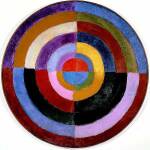 Abstract artworks diverge from depicting recognizable scenes or objects and instead use colors, forms, and lines to create compositions that exist independently of visual references from the natural world. This movement, which gained momentum in the early 20th century, was propelled by artists such as Wassily Kandinsky, Piet Mondrian, and Kazimir Malevich. These artists aimed to explore spiritual, emotional, and More in pastels or portraits and still lives.
Abstract artworks diverge from depicting recognizable scenes or objects and instead use colors, forms, and lines to create compositions that exist independently of visual references from the natural world. This movement, which gained momentum in the early 20th century, was propelled by artists such as Wassily Kandinsky, Piet Mondrian, and Kazimir Malevich. These artists aimed to explore spiritual, emotional, and More in pastels or portraits and still lives.
But what are pastels colors and where to get pastels? Pastels are an art medium that bridges in between drawings and paintings. Finished pieces by the best pastel artists can be just as dazzling as a paintings, yet the process of creation is much more like drawingDrawing is a foundational art form that involves creating images on a surface, typically paper, using tools such as pencils, pens, and charcoal. It is a versatile medium that allows artists to express ideas, emotions, and stories through lines, shapes, and shading. Historical Background • Prehistoric Beginnings: The earliest known drawings date back to prehistoric times, with cave drawings found More than paintingPainting is a fundamental form of visual art that has been practiced for thousands of years. It involves applying pigment to a surface such as canvas, paper, or a wall. Painting can be explored through various styles, techniques, and mediums, each offering unique possibilities for expression and creativity. Historical Background • Ancient Beginnings: The history of painting dates back to More. A pastel contains pure powdered pigment and a binder in the form of a stick. These pigmentsPigments are essential to the creation of art, providing the vibrant colors that artists use to bring their visions to life. These substances, derived from a variety of natural and synthetic sources, have a rich history and a wide range of applications in both traditional and modern art. Colour Pigments Definition and Composition • Pigment: A material that imparts color More are just like those used to produce other art media, such as acrylicsAcrylics are a popular and versatile type of paint used in various art forms. Known for their vibrant colors and quick-drying properties, acrylic paints are favored by artists for their flexibility and ease of use. Historical Background • Invention and Early Use: Acrylic paint was first developed in the 1930s by chemists experimenting with synthetic resins. Initially used in industrial More or oil paints. The pastel looks like a mixture of a stick of crayon and a piece of chalk. You will hold it just as you would grab onto a pencil or paint brush.

Best Art Pastels: Our Choice
- Popular
Schmincke Extra Soft Pastels - Rembrandt Soft Pastels
- Sennelier Soft Pastels
- Popular
Unison Soft Pastels - Prismacolor NuPastel Artist Pastels
| Qualities | Popular Schmincke Extra Soft Pastels | Rembrandt Soft Pastels | Sennelier Soft Pastels | Popular Unison Soft Pastels | Prismacolor NuPastel Artist Pastels |
| Qualities | $$$ | $$$ | $$ | $$ | $ |
| Color Vibrance | very strong | strong | strong | very strong | medium |
| Texture | smooth, soft | smooth, soft | solid | very soft | stronger |
| Overall Satisfaction | excellent | very good | very good | excellent | very good |
| Buy Now | Buy Now | Buy Now | Buy Now | Buy Now |
- Popular
Faber-Castell Goldfaber Studio Soft Pastel - Derwent Academy Oil Pastels
- Sennelier Oil Pastels
- Popular
Richeson Soft Handrolled Pastels - Art Spectrum Artists’ Soft Pastels
| Qualities | Popular Faber-Castell Goldfaber Studio Soft Pastel | Derwent Academy Oil Pastels | Sennelier Oil Pastels | Popular Richeson Soft Handrolled Pastels | Art Spectrum Artists’ Soft Pastels |
| Qualities | $ | $ | $$ | $$$ | $$ |
| Color Vibrance | medium | strong | very strong | very strong | very strong |
| Texture | solid | creamy | smooth, creamy | buttery | smooth |
| Overall Satisfaction | very good | very good | excellent | excellent | excellent |
| Buy Now | Buy Now | Buy Now | Buy Now | Buy Now |
- Holbein Artists’ Soft Pastels
- Holbein Artists’ Oil Pastels
- Popular
Blick Artists’ Soft Pastels - Popular
PanPastel Artists’ PaintingPainting is a fundamental form of visual art that has been practiced for thousands of years. It involves applying pigment to a surface such as canvas, paper, or a wall. Painting can be explored through various styles, techniques, and mediums, each offering unique possibilities for expression and creativity. Historical Background • Ancient Beginnings: The history of painting dates back to More Pastels - Caran d’Ache Pastel Pencils
| Qualities | Holbein Artists’ Soft Pastels | Holbein Artists’ Oil Pastels | Popular Blick Artists’ Soft Pastels | Popular PanPastel Artists’ PaintingPainting is a fundamental form of visual art that has been practiced for thousands of years. It involves applying pigment to a surface such as canvas, paper, or a wall. Painting can be explored through various styles, techniques, and mediums, each offering unique possibilities for expression and creativity. Historical Background • Ancient Beginnings: The history of painting dates back to More Pastels | Caran d’Ache Pastel Pencils |
| Qualities | $$ | $$ | $$ | $$$ | $$$ |
| Color Vibrance | very strong | very strong | very strong | very strong | strong |
| Texture | smooth | buttery | velvety | very soft | creamy, buttery |
| Overall Satisfaction | excellent | very good | excellent | excellent | very good |
| Buy Now | Buy Now | Buy Now | Buy Now | Buy Now |
Short History of Pastels
The history of pastels goes back to the time of the Renaissance. The medium of dry pastels originated in Northern Italy during the 16th century and soon became a favorite of many masters such as Michelangelo and Leonardo da Vinci, who used the pastels for sketchingSketching is a fundamental practice in the art world, involving the creation of quick, loose drawings to capture basic shapes, forms, and ideas. It serves as the backbone for more detailed artworks and helps artists refine their concepts. Essential Sketching Supplies • Pencils: Ranging from hard (H) to soft (B) grades, providing a variety of lines and textures. • Paper: More. During the Renaissance, there were only three colors of the medium available – black, white, and red. This is quite a difference to today, with over 1,600 hues on the market!
During the 18th century, pastels became even more popular, especially in France and England. At that time, it was en vogue to paint portraits using a combination of pastels and gouacheGouache is a painting medium similar to watercolor but with a higher pigment content, resulting in a more opaque and vibrant finish. Known for its versatility and rich texture, gouache is favored by artists for its ability to create both detailed illustrations and bold, expressive works. Historical Background Gouache has a long history, used by artists and illustrators across various More paint. One century later, modern artists made pastel paintings their own. Edgar Degas is most famous for using them to depict dancers, just as Paul Gauguin and Claude MonetFrench painter Claude Monet (1840 – 1926) was a key figure of the impressionist movement which started in the second half of the 19th century. During his long career, Monet focused on depicting leisure activities and plein air landscape painting. Born in Paris, his family moved to Le Havre in Normandy when Claude was 5 years old. From early on, More used them in their compositions. Simultaneously, abstract art Abstract artworks diverge from depicting recognizable scenes or objects and instead use colors, forms, and lines to create compositions that exist independently of visual references from the natural world. This movement, which gained momentum in the early 20th century, was propelled by artists such as Wassily Kandinsky, Piet Mondrian, and Kazimir Malevich. These artists aimed to explore spiritual, emotional, and More with pastels became a big trend.
Abstract artworks diverge from depicting recognizable scenes or objects and instead use colors, forms, and lines to create compositions that exist independently of visual references from the natural world. This movement, which gained momentum in the early 20th century, was propelled by artists such as Wassily Kandinsky, Piet Mondrian, and Kazimir Malevich. These artists aimed to explore spiritual, emotional, and More with pastels became a big trend.
The history of oil pastels is not half as long. They were first created by Sakura in 1925 as a combination of wax, oil, and pigment. This non-toxic mixture was aimed at children as the target group. In 1949, Henri Sennelier invented artist-grade oil pastels at the request of famous artists like Pablo PicassoPablo Picasso (1881–1973), was a Spanish painter, sculptor, graphic artist, and resident in France from 1904. He was a dominant figure in avant-garde movements in the first half of the 20th century due to his technical versatility and prolific inventiveness. picasso-self-portrait Picasso’s progression in his early work is largely categorized by predominant colour schemes: His Blue Period (1901-1904) features motifs More. These artists were looking for something more advanced than the Sakura sticks, a medium, that they could use while travelling and still achieve painterly effects of oil paint. Thus, the Sennelier Oil Pastel was born.
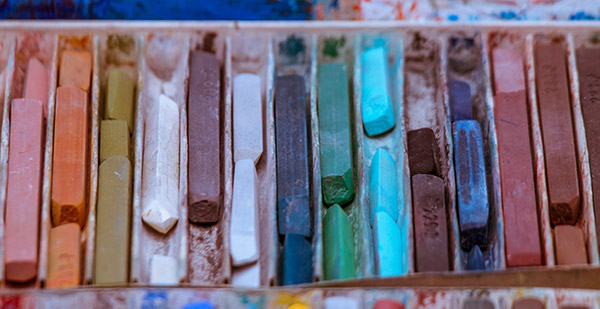
Factors to Consider When Buying Art Pastels
With a plethora of choices and so many art pastel brands out there, buying the right kind of pastel can seem challenging. But do not worry, we will walk you through all the must-know parameters to pay attention to when choosing your art pastels, so that you will find exactly what you need.
TYPES OF PASTELS
Crayon pastels consist of powdered pigment in combination with a binder. The type of pastel and the amount of binder used will determine the exact composition and characteristics of the pastel stick. Furthermore, there are variations between the individual manufacturers.
You can choose between five main types of pastels: soft pastels, pan pastels, hard pastels, oil pastels, and pastel pencils. All of them are pigmentsPigments are essential to the creation of art, providing the vibrant colors that artists use to bring their visions to life. These substances, derived from a variety of natural and synthetic sources, have a rich history and a wide range of applications in both traditional and modern art. Colour Pigments Definition and Composition • Pigment: A material that imparts color More in stick or pan form, but they vary in how they are bound together. Soft pastels, hard pastels, and pencil pastels use gum or resin binder. This means that they can be used in the same paintingPainting is a fundamental form of visual art that has been practiced for thousands of years. It involves applying pigment to a surface such as canvas, paper, or a wall. Painting can be explored through various styles, techniques, and mediums, each offering unique possibilities for expression and creativity. Historical Background • Ancient Beginnings: The history of painting dates back to More since they are compatible with each other.
Oil pastels and pencil oil pastels, on the other side, use a binder made from oil or wax, giving them a unique texture like oil paints. This means that they cannot be mixed with the other categories of pastel types.
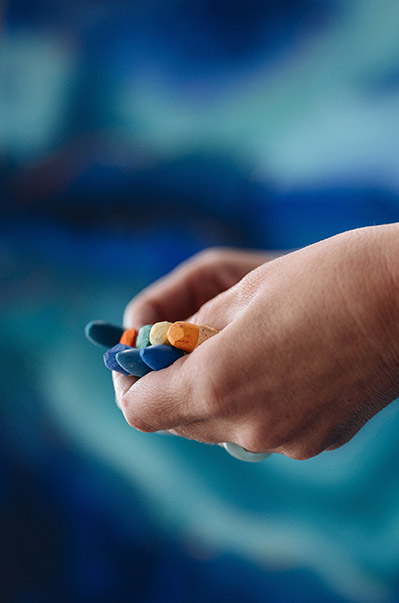
Soft Pastels
Artists’ soft pastels are the traditional form of pastels and are widely used among artists and hobbyists. So, what are soft pastels made of? These pastels boast a very high concentration of pigment, held together by only a very small amount of binder, making the colors brilliantly intense. On the flip side, only a small amount of binder will make artists’ soft pastels crumble more easily. Blending or smudging with your extra soft pastels colors will result in a larger amount of color dust. The powdery texture makes colored pastels great for layeringLayering is a fundamental technique in art that involves building up multiple layers of material to create depth, texture, and complexity in a composition. This approach is used in various art forms, including painting, drawing, digital art, and mixed media. Layering allows artists to add richness and dimension to their work, making it more dynamic and engaging. Defining Layering Layering More lots of pigment and achieving painterly effects. While you can use the edges for thinner lines, most professionals will resort to pastel pencils or hard pastels for detailed drawings. Once you have finished your soft pastel art, you should protect it by either framing it under glass or spraying it with a fixative to prevent any unwanted smudging.
The best soft pastels brands are available in an extensive range of colors. Some manufacturers have assortments of around 500 different colors! Good brands offer their soft pastels individually. Yet when you are just beginning your pastel journey, we recommend to buy soft pastels as a starter set that provides a balanced color paletteA color palette refers to a selection of colors used in design and art. It can set the tone, convey emotions, and highlight key elements. color wheel Types of Color Palettes • Monochromatic: Uses variations in lightness and saturation of a single color. Ideal for creating a harmonious and cohesive look. • Analogous: Combines colors that are next to each More. On this basis, you can extend your collection over time for your best soft pastel drawingDrawing is a foundational art form that involves creating images on a surface, typically paper, using tools such as pencils, pens, and charcoal. It is a versatile medium that allows artists to express ideas, emotions, and stories through lines, shapes, and shading. Historical Background • Prehistoric Beginnings: The earliest known drawings date back to prehistoric times, with cave drawings found More efforts.
Each brand uses its own individual formula, affecting how powdery its pastels are and how easily they crumble. Therefore, you will have to test yourself to find out which product best suits your endeavors and how to draw in pastels you like best. Further down, you will find our product recommendations for soft pastels, that are well worth investing in.
Pan Pastels
What are pan pastels? They are also soft pastels in nature. But instead of being molded into sticks, they come in compacts similar to makeup powder. This design allows for minimum use of binder and an even higher pigment concentration compared to other pastel products. The pastel pans are a 21st-century invention and have been well received by the art world due to the extra high pigment concentration and accordingly brilliant results. They further appeal to artists since they can be applied to the support like paint, making them great portrait pastels. There is a broad range of tools for application available, which are made from special micropore sponges for panpastel artists’ pastels.
One great advantage of pan pastels is that they are easy to blend, and they can even be erased. They have high compatibility with other pastel mediums so you can use pan pastels for an entire paintingPainting is a fundamental form of visual art that has been practiced for thousands of years. It involves applying pigment to a surface such as canvas, paper, or a wall. Painting can be explored through various styles, techniques, and mediums, each offering unique possibilities for expression and creativity. Historical Background • Ancient Beginnings: The history of painting dates back to More or in combination with soft and hard sticks. Just blend pastels as you go along creating your picture. Compared to conventional soft pastels, they produce much less dust and are therefore cleaner and safer to use, since you won’t inhale the dust. Like pastel sticks, you get pan pastels in sets or you can purchase them individually. As a beginner, we recommend one of the starter sets which will give you a good basis to build on.
Hard pastels
Hard pastels are very similar to soft pastels in that they contain the same ingredients. The only difference is that the proportion of binder is higher in the best hard pastels, and they contain less pigment. Accordingly, the colors are not as vibrant and they are more stable, not crumbling or breaking as easily. This makes them useful for drawings, fine details, drawingDrawing is a foundational art form that involves creating images on a surface, typically paper, using tools such as pencils, pens, and charcoal. It is a versatile medium that allows artists to express ideas, emotions, and stories through lines, shapes, and shading. Historical Background • Prehistoric Beginnings: The earliest known drawings date back to prehistoric times, with cave drawings found More outlines, and adding accents, and they were traditionally used for creating preliminary sketches for a composition. Hard pastels come in square or cylindrical sticks that can be sharpened with a knife to create sharp edges. Furthermore, the sides of the hard pastel can be used for applying wider bands of color.
You can either use hard pastels to draw an entire picture, but it is more common for professionals to use them in mixed techniques with soft pastels. The combination of different dry pastel media is unproblematic since hard pastels can be blended just like soft pastels. We recommend using hard pastels mainly for sketches and fine details.
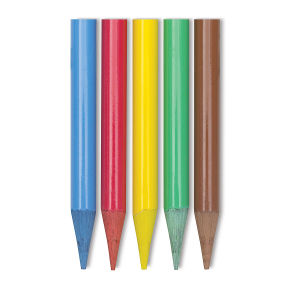
Pastel Pencils
How to define pastels in pencil form and what are the best pastels pencils? Pastel pencils resemble conventional graphite pencils, but instead of the graphite, they have a thin stick of pastel encased within the wood that has a consistency between soft and hard pastels. Usually, pastel pencils are used in combination with other types of pastels. They are convenient in that they can be used both wet and dry and can easily be blended. You can sharpen them to a point with a regular pencil sharpener so that you can create pointy details. Or you can use them for preliminary sketches, which comes in handy since regular graphite pencils cannot be used together with pastels. One further big advantage of pastel pencils is that they don’t create any mess like the dust-producing soft pastels, and they are great for drawingDrawing is a foundational art form that involves creating images on a surface, typically paper, using tools such as pencils, pens, and charcoal. It is a versatile medium that allows artists to express ideas, emotions, and stories through lines, shapes, and shading. Historical Background • Prehistoric Beginnings: The earliest known drawings date back to prehistoric times, with cave drawings found More outside.
Most manufacturers offer assortments of around 60 pastel pencils colors, available in sets or individually, including muted pastels color schemes. We recommend you begin with a starter set and, if you like the medium, expand your collection on this basis.
Color Chalk Pastels
So, what are chalk pastels or charcoalCharcoal is a popular and expressive medium used in drawing. Known for its deep blacks and range of tones, charcoal allows artists to create dramatic and dynamic artworks with a distinct, textured look. Historical Background • Ancient Beginnings: Charcoal has been used since prehistoric times, with early humans using burnt sticks to create drawings on cave walls. These early works More pastels as they are sometimes called? As suggested in their name, artist chalk pastels have a chalky consistency. They are made from calcium carbonate with a minimal amount of pigment. The most common ones that we are all familiar with will be the white chalk pastel and colored chalk pastels that we know from school. Therefore, art chalk pastels are not as creamy, smooth, and vibrant as soft pastels. Soft chalk pastels further do not provide as opaque colors as you would expect from other kinds of pastels and can fade over time.
Using chalk pastels, several coloring techniques can be applied such as layeringLayering is a fundamental technique in art that involves building up multiple layers of material to create depth, texture, and complexity in a composition. This approach is used in various art forms, including painting, drawing, digital art, and mixed media. Layering allows artists to add richness and dimension to their work, making it more dynamic and engaging. Defining Layering Layering More pastels, scumbling, feathering, and adding extra details and highlights. Blending chalk pastels is easy. However, even with the best chalk pastels, you cannot expect to have the colors stay vivid for a long time. Furthermore, dry chalk pastels can be easily erased. When deciding to buy chalk pastels, we recommend going for the better brands since the results will show clearly.
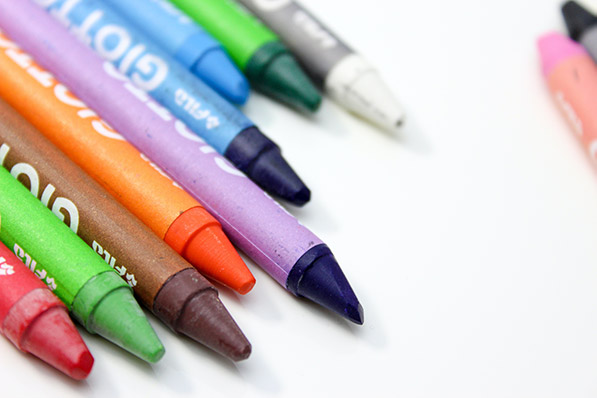
Oil Pastels
Quite different from chalky pastels, the best oil pastels have a soft, buttery consistency and produce intense colors due to the high concentration of pigmentsPigments are essential to the creation of art, providing the vibrant colors that artists use to bring their visions to life. These substances, derived from a variety of natural and synthetic sources, have a rich history and a wide range of applications in both traditional and modern art. Colour Pigments Definition and Composition • Pigment: A material that imparts color More. If you like the texture of oil paints but cannot stand the numerous required tools and the mess they create, you will love modern art oil pastels, which are also called wax pastels. So, what are oil pastels? Good oil pastels are cylindrical sticks of pigment, bound together by oil or wax, not gum, giving them a distinctive consistency. Unlike soft pastels, art oil pastels won’t smudge, crumble, or produce fine dust. They are much more stable than soft pastels and designs with oil pastels do not require fixation.
What is great about soft oil pastels is their waxy consistency, which makes paintingPainting is a fundamental form of visual art that has been practiced for thousands of years. It involves applying pigment to a surface such as canvas, paper, or a wall. Painting can be explored through various styles, techniques, and mediums, each offering unique possibilities for expression and creativity. Historical Background • Ancient Beginnings: The history of painting dates back to More with pastels a unique experience. You can spread them like oil paint and make buttery strokes and impasto effects to create the best oil pastel drawingDrawing is a foundational art form that involves creating images on a surface, typically paper, using tools such as pencils, pens, and charcoal. It is a versatile medium that allows artists to express ideas, emotions, and stories through lines, shapes, and shading. Historical Background • Prehistoric Beginnings: The earliest known drawings date back to prehistoric times, with cave drawings found More. Or you might want to thin your artist oil pastels with turpentine to create washes and glazes for great abstract oil pastels paintings. Be aware though that when you blend oil pastels, the result won’t be as optimal compared to their dry counterparts and they are not compatible with other pastel types. Detail work can be difficult with artists’ oil pastels. What is more, manufacturers usually don’t offer as many colors as they do for soft pastels – besides the basic red, yellow, and blue oil pastels, just about 80 different specialty colors. However, this should be enough to create great abstract art Abstract artworks diverge from depicting recognizable scenes or objects and instead use colors, forms, and lines to create compositions that exist independently of visual references from the natural world. This movement, which gained momentum in the early 20th century, was propelled by artists such as Wassily Kandinsky, Piet Mondrian, and Kazimir Malevich. These artists aimed to explore spiritual, emotional, and More with oil pastels or great portraits and landscapes pastels paintings. The cost of oil pastels can be slightly on the higher end when you decide to buy good quality professional media, which we highly recommend. You will really feel the difference compared to cheap student-quality oil pastels!
Abstract artworks diverge from depicting recognizable scenes or objects and instead use colors, forms, and lines to create compositions that exist independently of visual references from the natural world. This movement, which gained momentum in the early 20th century, was propelled by artists such as Wassily Kandinsky, Piet Mondrian, and Kazimir Malevich. These artists aimed to explore spiritual, emotional, and More with oil pastels or great portraits and landscapes pastels paintings. The cost of oil pastels can be slightly on the higher end when you decide to buy good quality professional media, which we highly recommend. You will really feel the difference compared to cheap student-quality oil pastels!
Water-Soluble Pastels
Water-soluble color pastels resemble the consistency of soft pastels or oil chalk pastels. But they contain the water-soluble component polyethylene glycol, which allows the pastels to be thinned out to a half-transparent consistency using a water wash. This means that you can draw as you would with a normal pastel but then run water over your work and achieve a color that you can manipulate further. You can easily blend and mix different hues and colors with your paint pastels or water-soluble wax pastels, given their fluidity, and they allow for a range of color tintIn color theory, a tint is a lighter version of a color, created by adding white to the original hue. This simple yet powerful concept is fundamental for artists and designers, as it allows for a wide range of lighter tones that can be used to create depth, contrast, and visual interest in a composition. Defining Tint A tint results More effects depending on how much water you apply onto the working surface. Simply use a wet brush to run over your drawingDrawing is a foundational art form that involves creating images on a surface, typically paper, using tools such as pencils, pens, and charcoal. It is a versatile medium that allows artists to express ideas, emotions, and stories through lines, shapes, and shading. Historical Background • Prehistoric Beginnings: The earliest known drawings date back to prehistoric times, with cave drawings found More. Most manufacturers of water pastels only offer a restricted range of strong colors. However, they can easily be mixed and combined into new colors by smudging and blending pastels, and through washes.
QUALITY
What is the meaning of pastels grade? You can purchase pastels in two main qualities: student grade (sometimes referred to as beginner) and artist grade quality (sometimes referred to as professional). Some novice artists think that the only difference between these two categories is the higher price of soft pastels of better quality. Yet this couldn’t be further from reality. Artist-grade pastels are utterly different from their student-grade counterpart, and the crucial question is: “What are pastels made of?”

Artist Grade Quality
Artist quality pastels such as the best oil pastels for professionals or the best soft pastels for artists are strong and highly intense in color. This is achieved by using the highest quality of pigmentsPigments are essential to the creation of art, providing the vibrant colors that artists use to bring their visions to life. These substances, derived from a variety of natural and synthetic sources, have a rich history and a wide range of applications in both traditional and modern art. Colour Pigments Definition and Composition • Pigment: A material that imparts color More and less binder in the overall mixture. The high pigment concentration will lead to much more vibrant results in your final piece of art. The pigment sources will also be of much higher quality, ensuring great lightfastness ratings. This means that the colors will fade less over time when you have finished your picture. Below we will introduce some good oil pastels brands that are worth investing in and the best soft pastels manufacturers.
Student Grade Quality
If you are just starting your pastel journey and are on a tight budget, there is no need for high-quality oil pastels and you can opt for student grade cheap pastels. Not only are they much more affordable, but they are also ideal for practicing blending with pastels and other techniques. Student grade pastels contain more binder and filler, which implies that the colors of your picture won’t be as vibrant. Yet the higher binder concentration has the advantage that your pastels will not crumble as easily as artists’ grade pastels.
Since they contain high levels of pigment, good-quality pastels are not cheap. However, after the initial cost of buying a starter set or a range of colors, it is not too costly to add some more pastels individually according to your needs. As a student on a budget, it can make sense to first buy a cheap student-quality set. But once you are getting serious about your pastel art, we highly recommend investing in artist-quality soft pastels or good-quality oil pastels since you will really see the difference!
COLOR VARIETY
Since pastels cannot be mixed like other mediums such as acrylics, watercolors, or oil paints, a large assortment of colors is essential for you to create the best pastel drawingDrawing is a foundational art form that involves creating images on a surface, typically paper, using tools such as pencils, pens, and charcoal. It is a versatile medium that allows artists to express ideas, emotions, and stories through lines, shapes, and shading. Historical Background • Prehistoric Beginnings: The earliest known drawings date back to prehistoric times, with cave drawings found More. From general colors such as blue pastels, yellow pastels, and red pastels, the whole spectrum of light is available including white soft pastels. Pastels can be blended together, but they do not mix nearly as well as liquid paints.
The best pastel set will have a range of about 72 colors, but no less than 25 colors. While some artists have different sets of soft pastels in order to achieve different grades of vibrancy, others prefer to buy their pastels individually.
If you are a student or a beginner, we do not recommend investing in several pastel sets until you understand the different techniques used by pastel artists, since high-quality pastels can be expensive. In case you are unsure which type of pastels to choose, you can start off by purchasing your pastels individually which will keep your costs down. Once you know which kind of pastels you enjoy using, consider buying a good starter palette of colors.
Be aware that some artist-grade colors are more expensive than others. This is because certain pigmentsPigments are essential to the creation of art, providing the vibrant colors that artists use to bring their visions to life. These substances, derived from a variety of natural and synthetic sources, have a rich history and a wide range of applications in both traditional and modern art. Colour Pigments Definition and Composition • Pigment: A material that imparts color More are much more rare or expensive to mine. Therefore, the colors of the same brand can differ quite a bit. On the other hand, student-grade pastels can contain artificial pigmentsPigments are essential to the creation of art, providing the vibrant colors that artists use to bring their visions to life. These substances, derived from a variety of natural and synthetic sources, have a rich history and a wide range of applications in both traditional and modern art. Colour Pigments Definition and Composition • Pigment: A material that imparts color More which imitate the color of pricier natural pigmentsPigments are essential to the creation of art, providing the vibrant colors that artists use to bring their visions to life. These substances, derived from a variety of natural and synthetic sources, have a rich history and a wide range of applications in both traditional and modern art. Colour Pigments Definition and Composition • Pigment: A material that imparts color More. When such a substitute is used, you will find the word “hueIn color theory, hue is one of the main properties of a color, defining its dominant wavelength. This characteristic determines whether we perceive a color as red, orange, yellow, green, blue, or violet. Understanding hue is essential for artists, designers, and anyone working with color. Defining Hue • Definition: Hue is the degree to which a color can be described More” after the color name.

HEALTH AND SAFETY
As a dry medium, artist pastels can produce a great amount of dust, which can cause respiratory irritation. Therefore, you must be mindful not to inhale the dust into your lungs when using pastels. Exposure to pigmentsPigments are essential to the creation of art, providing the vibrant colors that artists use to bring their visions to life. These substances, derived from a variety of natural and synthetic sources, have a rich history and a wide range of applications in both traditional and modern art. Colour Pigments Definition and Composition • Pigment: A material that imparts color More such as cadmium, which are common in bright yellows, reds, and oranges, can lead to cadmium poisoning. Even if there are pastels available that advertise as non-toxic, it is more secure to circumvent breathing in the pastel dust.
So, what are the best soft pastels regarding your health? Many modern pastels are manufactured using replacements for cadmium, chromium and other toxic pigmentsPigments are essential to the creation of art, providing the vibrant colors that artists use to bring their visions to life. These substances, derived from a variety of natural and synthetic sources, have a rich history and a wide range of applications in both traditional and modern art. Colour Pigments Definition and Composition • Pigment: A material that imparts color More.
A good way to protect yourself from dusty pastels is wearing a good quality face mask. It will also be helpful to work in a well-ventilated room, a room with an air purifier, or outdoors.
The 15 Best Art Pastels for Hobbyists and Professionals
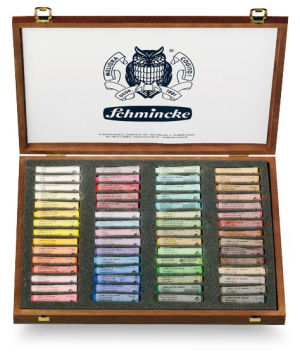
These professional-grade pastels by the manufacturer Schmincke are among the best soft pastels for professional artists due to their smooth, soft consistency. The rich, buttery texture contains only the finest artist’s pigmentsPigments are essential to the creation of art, providing the vibrant colors that artists use to bring their visions to life. These substances, derived from a variety of natural and synthetic sources, have a rich history and a wide range of applications in both traditional and modern art. Colour Pigments Definition and Composition • Pigment: A material that imparts color More held together by a minimum of bindersBinders are crucial components in the creation of art materials. They hold pigments together, allowing them to adhere to a surface and form a durable film. Understanding the different types of binders and their properties helps artists choose the right materials for their work. Definition and Composition • Binder: A substance that holds pigment particles together and allows them to More. The softness of these best artist pastels allows for a dense application, while the highest pigment concentration results in excellent color intensityIn color theory, intensity, also known as saturation or chroma, refers to the purity and vividness of a color. This property is essential for artists and designers as it helps create dynamic and engaging visuals. Intensity determines how bright or dull a color appears, influencing the overall impact and mood of a composition. Defining Intensity Intensity measures the degree of More.
Thanks to the unique formula, once you put the stick on the drawingDrawing is a foundational art form that involves creating images on a surface, typically paper, using tools such as pencils, pens, and charcoal. It is a versatile medium that allows artists to express ideas, emotions, and stories through lines, shapes, and shading. Historical Background • Prehistoric Beginnings: The earliest known drawings date back to prehistoric times, with cave drawings found More surface, the pigmentsPigments are essential to the creation of art, providing the vibrant colors that artists use to bring their visions to life. These substances, derived from a variety of natural and synthetic sources, have a rich history and a wide range of applications in both traditional and modern art. Colour Pigments Definition and Composition • Pigment: A material that imparts color More literally slide right off the stick without any breaking and only minimal crumbling. The fine pigmentsPigments are essential to the creation of art, providing the vibrant colors that artists use to bring their visions to life. These substances, derived from a variety of natural and synthetic sources, have a rich history and a wide range of applications in both traditional and modern art. Colour Pigments Definition and Composition • Pigment: A material that imparts color More of Schmincke soft pastels produce the most vibrant colors with the highest lightfastness ratings. Professional artists will also valueIn color theory, value refers to the lightness or darkness of a color. This concept is crucial for artists and designers because it helps create depth, contrast, and visual interest in their work. Value is one of the three properties of color, alongside hue and saturation. Defining Value Value indicates how light or dark a color appears. It ranges from More these premium soft pastels for their color variety which includes a broad range of yellows and oranges, purples, blues, and greens. These soft pastels come in a convenient wooden box with foam inserts for optimal organization. The sticks are wrapped in paper to protect your hands from residue and dust.
Soft Pastels – Best Brand! Get Schmincke Extra Soft Pastels now
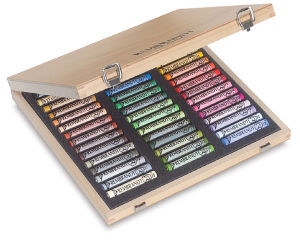
Since they were first created in 1899, Rembrandt soft pastels have become some of the most widely used professional-grade pastels in the world. They are made from the purest, finely ground pigmentsPigments are essential to the creation of art, providing the vibrant colors that artists use to bring their visions to life. These substances, derived from a variety of natural and synthetic sources, have a rich history and a wide range of applications in both traditional and modern art. Colour Pigments Definition and Composition • Pigment: A material that imparts color More to ensure a smooth, soft consistency and a vibrant color laydown. Mixed with the finest quality of kaolin clay binder, Rembrandt pastels are slightly harder than many other soft pastels, so that you have great control when drawingDrawing is a foundational art form that involves creating images on a surface, typically paper, using tools such as pencils, pens, and charcoal. It is a versatile medium that allows artists to express ideas, emotions, and stories through lines, shapes, and shading. Historical Background • Prehistoric Beginnings: The earliest known drawings date back to prehistoric times, with cave drawings found More detail work. The semi-hard pastels sticks are manufactured without mixing in any heavy metals such as cadmium, cobalt, and lead so that the pastels don’t have any sharp edges. The pigmentsPigments are essential to the creation of art, providing the vibrant colors that artists use to bring their visions to life. These substances, derived from a variety of natural and synthetic sources, have a rich history and a wide range of applications in both traditional and modern art. Colour Pigments Definition and Composition • Pigment: A material that imparts color More of Rembrandt chalk pastels deliver a high degree of color fastness to ensure that your paintings maintain their vibrancy over time. Each pastel comes paper wrapped so that you won’t get dusty hands.
These 45 assorted colors come in a convenient wooden box. They are ideal for drawingDrawing is a foundational art form that involves creating images on a surface, typically paper, using tools such as pencils, pens, and charcoal. It is a versatile medium that allows artists to express ideas, emotions, and stories through lines, shapes, and shading. Historical Background • Prehistoric Beginnings: The earliest known drawings date back to prehistoric times, with cave drawings found More natural scenes, still lives, and landscapes in pastels. If you enjoy Rembrandt pastels, we recommend also trying out Rembrandt oil pastels, which likewise are of superior quality.
Get your set of pastels now – Rembrandt Soft Pastels!
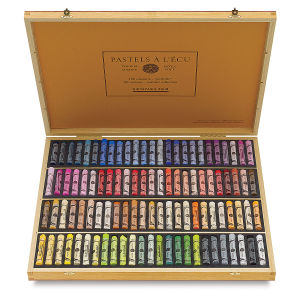
Sennelier artist pastels were first introduced at the turn of the 20th century. While the colors and hues have evolved, the making of the pastels themselves has remained relatively untouched. The highly pigmented soft pastels strike a perfect balance between hard pastels and soft pastels: Sennelier pastels neither produce hard lines nor do they crumble between your fingers. The manufacturer uses only the purest pigmentsPigments are essential to the creation of art, providing the vibrant colors that artists use to bring their visions to life. These substances, derived from a variety of natural and synthetic sources, have a rich history and a wide range of applications in both traditional and modern art. Colour Pigments Definition and Composition • Pigment: A material that imparts color More for their French pastels, bound with minimal amounts of natural bindersBinders are crucial components in the creation of art materials. They hold pigments together, allowing them to adhere to a surface and form a durable film. Understanding the different types of binders and their properties helps artists choose the right materials for their work. Definition and Composition • Binder: A substance that holds pigment particles together and allows them to More. The exclusive formula without any fillers or clays yields lightfast, water-soluble results. Each stroke of your portraits pastels will deliver a solid, powerful line of vibrant and bold color. The set includes several iridescent pastels, such as browns, beiges, greys, and skin tone soft pastels that can be used in portrait paintingPainting is a fundamental form of visual art that has been practiced for thousands of years. It involves applying pigment to a surface such as canvas, paper, or a wall. Painting can be explored through various styles, techniques, and mediums, each offering unique possibilities for expression and creativity. Historical Background • Ancient Beginnings: The history of painting dates back to More. The beautiful wooden box contains 100 brilliant colors that wait for you to create masterpieces!
Get Sennelier best portrait pastels now!

This British brand of handmade soft pastels is much softer than other artist-grade pastels due to very little binder. These splendid art soft pastels are gently hand-rolled and air-dried and when looking closely, you can still see the fingerprints of each pastels’ creator.
They come in a gorgeous range of colors and have a large assortment of earth-tone pastels. Unison’s unique color formulations contain only pure pigmentsPigments are essential to the creation of art, providing the vibrant colors that artists use to bring their visions to life. These substances, derived from a variety of natural and synthetic sources, have a rich history and a wide range of applications in both traditional and modern art. Colour Pigments Definition and Composition • Pigment: A material that imparts color More leading to intense, vibrant colors. They are based on traditional pigmentsPigments are essential to the creation of art, providing the vibrant colors that artists use to bring their visions to life. These substances, derived from a variety of natural and synthetic sources, have a rich history and a wide range of applications in both traditional and modern art. Colour Pigments Definition and Composition • Pigment: A material that imparts color More such as cadmiums, cobalts, and natural and synthetic earths. Since the stroke of Unison pastels is a bit thicker than that of a hard pastel, they are outstanding for more painterly work.
There are currently 374 colors in the Unison range, arranged in color groups of complementary tonesIn color theory, a tone is a version of a color created by adding gray (a mix of black and white) to the original hue. This concept is essential for artists and designers as it allows for a wide range of colors that are neither too dark nor too light, providing versatility in creating depth, mood, and harmony within a More and shadesIn color theory, a shade is a darker version of a color, created by adding black to the original hue. This concept is essential for artists and designers, as it allows for a range of deeper, more intense tones that can add depth and drama to a composition. Defining Shade A shade results from mixing a pure hue with black. More, allowing you for intuitive selection. Due to the handmaking process, the sticks can vary slightly in form and size. We recommend the gorgeous set of starter colors with 72 brilliantly colored sticks.
Get Unison handmade pastels now!
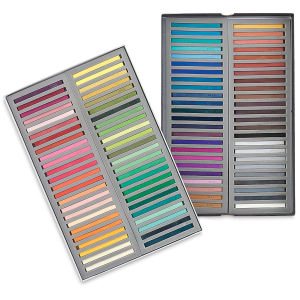
Prismacolor pastels are the ideal option when you are looking for bright, vibrant colors pastels on a budget. You will appreciate the unique texture: These chalk soft pastels are stronger than most other soft pastels so that you won’t find yourself left with a crumbly mess. You can use them wet or dry, and you can sharpen them, making them ideal for both broad strokes and detail work.
Prismacolor NuPastels are great for beginners, but many professional artists enjoy them as well. The creamy texture blends and shadesIn color theory, a shade is a darker version of a color, created by adding black to the original hue. This concept is essential for artists and designers, as it allows for a range of deeper, more intense tones that can add depth and drama to a composition. Defining Shade A shade results from mixing a pure hue with black. More nicely, so that you can easily create your masterpieces. We recommend this set of assorted colors, which includes 96 sticks of brilliant pastels.
Get Prismacolor NuPastel Artist Pastels now!
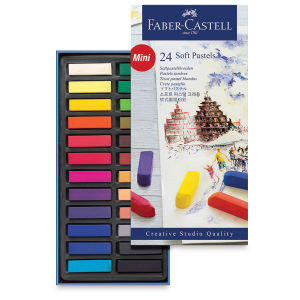
The Faber Castell Soft Pastels offer good quality at an exceptional price point. The half sticks come in a range of vibrant colors, making them ideal for landscapes, still lives, and portraits. Due to the harder consistency, you can easily draw fine lines and detail work with these art pastels supplies. Still, they glide smoothly across thick pastel paper. The vibrant colors of these cheap soft pastels produce outstanding opacity, so that you can achieve the original rich pastel effect with great blending characteristics. Students will enjoy these Faber Castell pastels half-sticks for experimenting with blending soft pastels, shading, and layeringLayering is a fundamental technique in art that involves building up multiple layers of material to create depth, texture, and complexity in a composition. This approach is used in various art forms, including painting, drawing, digital art, and mixed media. Layering allows artists to add richness and dimension to their work, making it more dynamic and engaging. Defining Layering Layering More. If you like the soft pastel version, you can also try the Faber Castell hard pastel line, which is equally intriguing.
Get your Faber-Castell Soft Pastels 24 now!
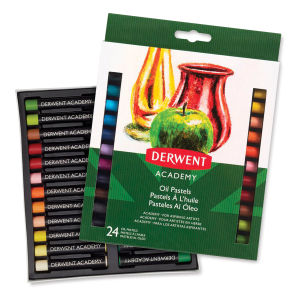
Derwent is one of the most respected and well-known brands when it comes to drawingDrawing is a foundational art form that involves creating images on a surface, typically paper, using tools such as pencils, pens, and charcoal. It is a versatile medium that allows artists to express ideas, emotions, and stories through lines, shapes, and shading. Historical Background • Prehistoric Beginnings: The earliest known drawings date back to prehistoric times, with cave drawings found More supplies. Derwent oil pastels are ideal for students who just get started in the world of oil pastels. Best, highly pigmented colors have a unique creamy texture that make them perfect for drawingDrawing is a foundational art form that involves creating images on a surface, typically paper, using tools such as pencils, pens, and charcoal. It is a versatile medium that allows artists to express ideas, emotions, and stories through lines, shapes, and shading. Historical Background • Prehistoric Beginnings: The earliest known drawings date back to prehistoric times, with cave drawings found More and coloring. Students and hobbyists will enjoy the dust-free formula that smoothly transfers to the paper and blends well with different colors. Your best drawingDrawing is a foundational art form that involves creating images on a surface, typically paper, using tools such as pencils, pens, and charcoal. It is a versatile medium that allows artists to express ideas, emotions, and stories through lines, shapes, and shading. Historical Background • Prehistoric Beginnings: The earliest known drawings date back to prehistoric times, with cave drawings found More in oil pastel will come to reality without no doubt.
These oil-based pastels are soluble in turpentine which thins the pastels so that you can create beautiful translucent effects. You can experiment with different techniques such as layeringLayering is a fundamental technique in art that involves building up multiple layers of material to create depth, texture, and complexity in a composition. This approach is used in various art forms, including painting, drawing, digital art, and mixed media. Layering allows artists to add richness and dimension to their work, making it more dynamic and engaging. Defining Layering Layering More or underpainting. With a little bit of practice, you will be able to create pieces that look like traditional oil paintings! To achieve best results and create the world best oil pastel drawingDrawing is a foundational art form that involves creating images on a surface, typically paper, using tools such as pencils, pens, and charcoal. It is a versatile medium that allows artists to express ideas, emotions, and stories through lines, shapes, and shading. Historical Background • Prehistoric Beginnings: The earliest known drawings date back to prehistoric times, with cave drawings found More, you should use paper that is slightly textured. Since these pastels are student grade, they are only available in a restricted color range. We recommend the Derwent Pastels Academy starter set with 24 brilliant colors including a white oil pastel and a shiny black oil pastel. If you enjoy Derwent oil pastels, you can also try Derwent soft pastels which are of equally great quality.
Get your best oil pastel set for school now! Derwent Academy Oil Pastels.
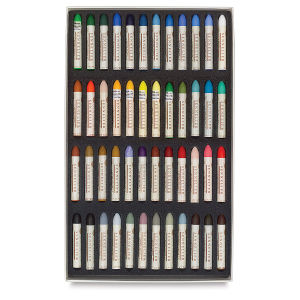
Respected by the most famous artists including Pablo PicassoPablo Picasso (1881–1973), was a Spanish painter, sculptor, graphic artist, and resident in France from 1904. He was a dominant figure in avant-garde movements in the first half of the 20th century due to his technical versatility and prolific inventiveness. picasso-self-portrait Picasso’s progression in his early work is largely categorized by predominant colour schemes: His Blue Period (1901-1904) features motifs More, Sennelier expressionist oil pastels are everything that other manufacturers strive to be. Both their smooth, creamy consistency and their intense, vibrant colors are unmatched, making them truly the best brand of oil pastels on the market. The best oil pastel company uses only top-quality pigment, an extremely pure synthetic binding medium, and mineral wax, providing the pastels with a unique creamy texture that allows for great freedom in pictorial expression.
Sennelier offers a broad range of different colors of the spectrum for vibrant results. They are some of the best oil pastels for blending, so that you can create further colors yourself. When you want to create an abstract paintingPainting is a fundamental form of visual art that has been practiced for thousands of years. It involves applying pigment to a surface such as canvas, paper, or a wall. Painting can be explored through various styles, techniques, and mediums, each offering unique possibilities for expression and creativity. Historical Background • Ancient Beginnings: The history of painting dates back to More, oil pastels by Sennelier should be your go-to choice. Besides classic hues, the range of colors includes metallic oil pastels and iridescent hues, a gradation of grays, and fully unique shadesIn color theory, a shade is a darker version of a color, created by adding black to the original hue. This concept is essential for artists and designers, as it allows for a range of deeper, more intense tones that can add depth and drama to a composition. Defining Shade A shade results from mixing a pure hue with black. More, making blending with oil pastels a real joy. Using oil pastels by Sennelier, you will enjoy the high pigment content, providing for excellent brightness and lightfastness. We strongly recommend the oil pastel set with 72 assorted colors, that will make you create the best oil pastel drawingDrawing is a foundational art form that involves creating images on a surface, typically paper, using tools such as pencils, pens, and charcoal. It is a versatile medium that allows artists to express ideas, emotions, and stories through lines, shapes, and shading. Historical Background • Prehistoric Beginnings: The earliest known drawings date back to prehistoric times, with cave drawings found More in the world!
Oil pastel – best painting experiences guaranteed. Get Sennelier Oil Pastels now!
Best for Plein Air Work: Richeson Soft Handrolled Pastels
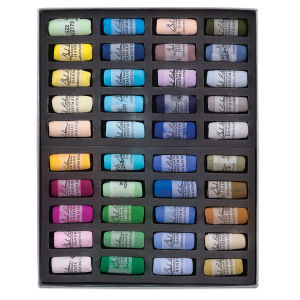
Richeson Pastels offer incredibly rich colors in an innovative shape ideal for plein air work and landscape paintingLandscape painting focuses on the depiction of natural scenery such as mountains, valleys, trees, rivers, and forests. It has been a significant genre in art history, evolving through various styles and periods. Landscape painting captures the beauty of the natural world and often reflects the cultural and philosophical views of the time. JMW Turner, Calais Pier, 1801 Historical Context Landscape More. The compact size of the set makes them easy to store and take into the field. Professional artists appreciate the luxurious, buttery texture that will create the best pastel art with the first stroke on the paper. The broad color range of deep and rich pigmentsPigments are essential to the creation of art, providing the vibrant colors that artists use to bring their visions to life. These substances, derived from a variety of natural and synthetic sources, have a rich history and a wide range of applications in both traditional and modern art. Colour Pigments Definition and Composition • Pigment: A material that imparts color More covers the full spectrum of light with rich darks and light tints.
Richeson Pastels are much larger than the regular half stick and they include wrappers so that you won’t get your fingers dirty when you paint with pastels. We recommend this landscape set with 40 brilliant colors and hues!
Get Richeson Soft Handrolled Pastels now!
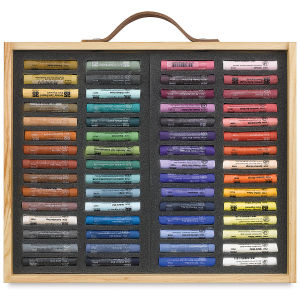
Art Spectrum Pastels are artists’ quality soft pastels with outstanding lightfastness ratings, ensuring that the piece you make today will continue to look its absolute best years down the road. For many years, Art Spectrum has perfected the art of making soft pastels by delivering exactly what the professional artist demands from this medium. The pastels provide artists with colors that are brilliant and intense due to the highest quality pigmentsPigments are essential to the creation of art, providing the vibrant colors that artists use to bring their visions to life. These substances, derived from a variety of natural and synthetic sources, have a rich history and a wide range of applications in both traditional and modern art. Colour Pigments Definition and Composition • Pigment: A material that imparts color More that are triple-milled at maximum concentration. You will enjoy the smoldering darks, intense colors of the middle range and very subtle, delicate hues.
Art Spectrum soft pastels are free of heavy metals, asbestos, and other toxic substances, that might impair the enjoyment in the process of creating art. Still, even when non-toxic, you should never blow to get any pastel dust off your paper, since you would make the particles go into the air and settle everywhere, including your lungs. Use an easel or lean your drawingDrawing is a foundational art form that involves creating images on a surface, typically paper, using tools such as pencils, pens, and charcoal. It is a versatile medium that allows artists to express ideas, emotions, and stories through lines, shapes, and shading. Historical Background • Prehistoric Beginnings: The earliest known drawings date back to prehistoric times, with cave drawings found More board against the wall, so that any pastel dust will simply fall down and not sit on your paintingPainting is a fundamental form of visual art that has been practiced for thousands of years. It involves applying pigment to a surface such as canvas, paper, or a wall. Painting can be explored through various styles, techniques, and mediums, each offering unique possibilities for expression and creativity. Historical Background • Ancient Beginnings: The history of painting dates back to More.
We recommend this set of 60 brilliant, assorted colors that will get you going on your art journey!
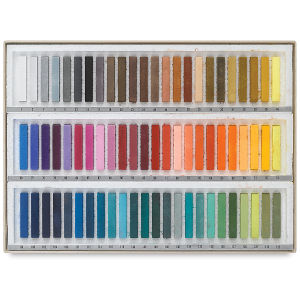
Holbein has developed a broad range of professional-quality soft pastels with great pigment richness. They offer great covering and optimal blending power when applied. Each stick is provided in a square shape for great working versatility: You can use the flat sides for covering larger areas, while the sharp edges are ideal for creating details. The softness and pigment purity have been widely acclaimed by many artists.
How are pastels made in the Holbein factories? The production of Holbein Soft Pastels is entirely computerized and mechanized from inception to the final product. This ensures hueIn color theory, hue is one of the main properties of a color, defining its dominant wavelength. This characteristic determines whether we perceive a color as red, orange, yellow, green, blue, or violet. Understanding hue is essential for artists, designers, and anyone working with color. Defining Hue • Definition: Hue is the degree to which a color can be described More predictability when sketchingSketching is a fundamental practice in the art world, involving the creation of quick, loose drawings to capture basic shapes, forms, and ideas. It serves as the backbone for more detailed artworks and helps artists refine their concepts. Essential Sketching Supplies • Pencils: Ranging from hard (H) to soft (B) grades, providing a variety of lines and textures. • Paper: More, undercoating, and finishing your work. We recommend this assorted set of 72 vivid colors – enough colors to get started and create the next masterpiece! You can extend your collection of Holbein Pastels by buying further colors, which are available individually.
Get your Holbein Artists’ soft pastels online!
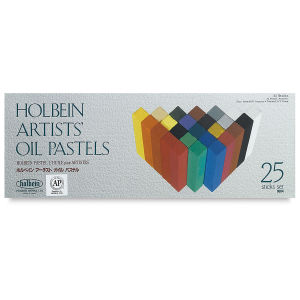
These artist-quality oil pastels feel smoother than even the finest soft pastel, and they blend like no other. Holbein Oil Pastels are the best brand for oil pastels when it comes to achieving brilliant effects on almost any surface, even on top of acrylic and oil color. You can also create polymer clay pastel paintings and all kinds of other great crafts with oil pastels. Making stunning washes using turpentine and blending oil pastels by Holbein is a cinch. Your dry oil pastels come in a broad range of colors, manufactured according to the Munsell color standard for hueIn color theory, hue is one of the main properties of a color, defining its dominant wavelength. This characteristic determines whether we perceive a color as red, orange, yellow, green, blue, or violet. Understanding hue is essential for artists, designers, and anyone working with color. Defining Hue • Definition: Hue is the degree to which a color can be described More, valueIn color theory, value refers to the lightness or darkness of a color. This concept is crucial for artists and designers because it helps create depth, contrast, and visual interest in their work. Value is one of the three properties of color, alongside hue and saturation. Defining Value Value indicates how light or dark a color appears. It ranges from More, and chroma. The manufacturing process is completely automated, which guarantees that you can uniformly paint with oil pastels on the chosen surface.
The pastel mixture of these best oil pastels for artists uses only the finest wax and highly refined mineral oil. Unlike pastels that use vegetable oils, these ones won’t crack or dry out. With oil pastels by Holbein, your strokes will be even and clean without stickiness. Don’t use any fixative once you are finished with your portraits, still lives, or landscapes – oil pastels might lose some of their vibrancy. You can directly mount your best drawingDrawing is a foundational art form that involves creating images on a surface, typically paper, using tools such as pencils, pens, and charcoal. It is a versatile medium that allows artists to express ideas, emotions, and stories through lines, shapes, and shading. Historical Background • Prehistoric Beginnings: The earliest known drawings date back to prehistoric times, with cave drawings found More with oil pastels under glass. We recommend starting with this set of 25 vibrant colors as a basis and extending your collection of pastels as you go. You won’t regret buying these best oil pastels in the world.
Get your professional oil pastel set by Holbein now!
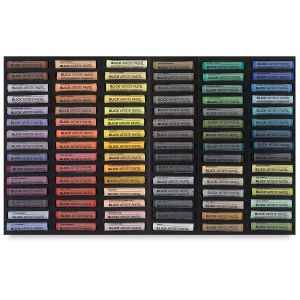
When looking for professional quality at an affordable price, we recommend choosing Blick Pastels. They are available in a variety of vibrant colors and soft hues, which are ideal for many all kinds of color sketchingSketching is a fundamental practice in the art world, involving the creation of quick, loose drawings to capture basic shapes, forms, and ideas. It serves as the backbone for more detailed artworks and helps artists refine their concepts. Essential Sketching Supplies • Pencils: Ranging from hard (H) to soft (B) grades, providing a variety of lines and textures. • Paper: More and pastel paintingPainting is a fundamental form of visual art that has been practiced for thousands of years. It involves applying pigment to a surface such as canvas, paper, or a wall. Painting can be explored through various styles, techniques, and mediums, each offering unique possibilities for expression and creativity. Historical Background • Ancient Beginnings: The history of painting dates back to More. The full range of Blick chalk pastels colors includes hues rather than mineral pigmentsPigments are essential to the creation of art, providing the vibrant colors that artists use to bring their visions to life. These substances, derived from a variety of natural and synthetic sources, have a rich history and a wide range of applications in both traditional and modern art. Colour Pigments Definition and Composition • Pigment: A material that imparts color More, which not only keeps costs down but also makes them healthier to use. These soft pastels cost much less than other artist-quality supplies indeed!
Blick Soft Pastels are created by combining the finest pigmentsPigments are essential to the creation of art, providing the vibrant colors that artists use to bring their visions to life. These substances, derived from a variety of natural and synthetic sources, have a rich history and a wide range of applications in both traditional and modern art. Colour Pigments Definition and Composition • Pigment: A material that imparts color More with only very little binder, giving them a velvety texture for easy laydown and consistent coverage, and making them extremely lightfast. You will enjoy using them for different techniques, including blending and layeringLayering is a fundamental technique in art that involves building up multiple layers of material to create depth, texture, and complexity in a composition. This approach is used in various art forms, including painting, drawing, digital art, and mixed media. Layering allows artists to add richness and dimension to their work, making it more dynamic and engaging. Defining Layering Layering More since there is only minimal crumbling. This set of 90 assorted colors is a great basis to get started, further pastels are available individually.
Blick Artists’ Soft Pastels – buy now!
Best Pan Pastels: PanPastel Artists’ PaintingPainting is a fundamental form of visual art that has been practiced for thousands of years. It involves applying pigment to a surface such as canvas, paper, or a wall. Painting can be explored through various styles, techniques, and mediums, each offering unique possibilities for expression and creativity. Historical Background • Ancient Beginnings: The history of painting dates back to More Pastels
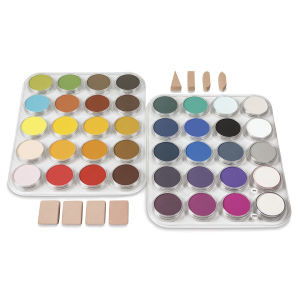
PanPastels are loaded with the highest quality of artists’ pigmentsPigments are essential to the creation of art, providing the vibrant colors that artists use to bring their visions to life. These substances, derived from a variety of natural and synthetic sources, have a rich history and a wide range of applications in both traditional and modern art. Colour Pigments Definition and Composition • Pigment: A material that imparts color More. These fine art pastels are made using a unique manufacturing process so that only minimal binder is required. The result is an extra-soft, low-dust formulation rich in color and highly pigmented. Not only are these soft artists’ pastels erasable, but also compatible with the traditional kind of soft pastels.
PanPastels are uniquely packaged in interlocking jars, which protects the colors and reduces waste. Each pan contains almost 40% more color material than the regular pastel stick. How to use pan pastels? You can use specific tools to control PanPastel color just like paint. They can easily be mixed, layered, and blended – just apply them like common paint. Accordingly, you can create more painterly effects such as controlled marks, veils of color, and large color fields with the best pan pastels.
We recommend the Dawn Emerson set of 40 brilliant colors, which is a good basis to get you started!

To meet the need of today’s pastel artists as fully as possible, expert manufacturer Caran d’Ache offers an exceptional range of soft artist pastels pencils. These professional-quality pencils are produced in Geneva workshops in close collaboration with international master pastel artists. They are great both for beginners and experienced amateur or professional artists, for preliminary work and detailed finishing of your work.
They are shaped like pencils and are hexagonal, making them comfortable to hold and use.
The extra-fine pastel lead is creamy and buttery. You will enjoy the great selection of vibrant colors for anything you may be paintingPainting is a fundamental form of visual art that has been practiced for thousands of years. It involves applying pigment to a surface such as canvas, paper, or a wall. Painting can be explored through various styles, techniques, and mediums, each offering unique possibilities for expression and creativity. Historical Background • Ancient Beginnings: The history of painting dates back to More. Using them for blending, shading, and also sharper detail work is no problem since they hold the line very well. And the best of it all: They are much less messy than the regular pastel stick and hardly produce any dust. We recommend starting with this set of 40 pastel pencils and extending your collection with individually sold pastels as you go.
Get your Caran d’Ache Pastel Pencils now!
Short History of Pastels
The history of pastels goes back to the time of the Renaissance. The medium of dry pastels originated in Northern Italy during the 16th century and soon became a favorite of many masters such as Michelangelo and Leonardo da Vinci, who used the pastels for sketchingSketching is a fundamental practice in the art world, involving the creation of quick, loose drawings to capture basic shapes, forms, and ideas. It serves as the backbone for more detailed artworks and helps artists refine their concepts. Essential Sketching Supplies • Pencils: Ranging from hard (H) to soft (B) grades, providing a variety of lines and textures. • Paper: More. During the Renaissance, there were only three colors of the medium available – black, white and red. This is quite a difference to today, with over 1,600 hues on the market!
During the 18th century, pastels became even more popular, especially in France and England. At that time, it was en vogue to paint portraits using a combination of pastels and gouacheGouache is a painting medium similar to watercolor but with a higher pigment content, resulting in a more opaque and vibrant finish. Known for its versatility and rich texture, gouache is favored by artists for its ability to create both detailed illustrations and bold, expressive works. Historical Background Gouache has a long history, used by artists and illustrators across various More paint. One century later, modern artists made pastel paintings their own. Edgar Degas is most famous for using them to depict dancers, just as Paul Gauguin and Claude MonetFrench painter Claude Monet (1840 – 1926) was a key figure of the impressionist movement which started in the second half of the 19th century. During his long career, Monet focused on depicting leisure activities and plein air landscape painting. Born in Paris, his family moved to Le Havre in Normandy when Claude was 5 years old. From early on, More used them in their compositions. Simultaneously, abstract art Abstract artworks diverge from depicting recognizable scenes or objects and instead use colors, forms, and lines to create compositions that exist independently of visual references from the natural world. This movement, which gained momentum in the early 20th century, was propelled by artists such as Wassily Kandinsky, Piet Mondrian, and Kazimir Malevich. These artists aimed to explore spiritual, emotional, and More with pastels became a big trend.
Abstract artworks diverge from depicting recognizable scenes or objects and instead use colors, forms, and lines to create compositions that exist independently of visual references from the natural world. This movement, which gained momentum in the early 20th century, was propelled by artists such as Wassily Kandinsky, Piet Mondrian, and Kazimir Malevich. These artists aimed to explore spiritual, emotional, and More with pastels became a big trend.
The history of oil pastels is not half as long. They were first created by Sakura in 1925 as a combination of wax, oil, and pigment. This non-toxic mixture was aimed at children as target group. In 1949, Henri Sennelier invented artist grade oil pastels at the request of famous artists like Pablo PicassoPablo Picasso (1881–1973), was a Spanish painter, sculptor, graphic artist, and resident in France from 1904. He was a dominant figure in avant-garde movements in the first half of the 20th century due to his technical versatility and prolific inventiveness. picasso-self-portrait Picasso’s progression in his early work is largely categorized by predominant colour schemes: His Blue Period (1901-1904) features motifs More. These artists were looking for something more advanced than the Sakura sticks, a medium, that they could use while travelling and still achieve painterly effects of oil paint. Thus, the Sennelier Oil Pastel was born.

Factors to Consider When Buying Art Pastels
With a plethora of choices and so many art pastel brands out there, buying the right kind of pastel can seem challenging. But do not worry, we will walk you through all the must-know parameters to pay attention to when choosing your art pastels, so that you will find exactly what you need.
TYPES OF PASTELS
Crayon pastels consist of powdered pigment in combination with a binder. The type of pastel and the amount of binder used will determine the exact composition and characteristics of the pastel stick. Furthermore, there are variations between the individual manufacturers.
You can choose between five main types of pastels: soft pastels, pan pastels, hard pastels, and oil pastels. All of them are pigment in stick or pan form, but they vary in how they are bound together. Soft pastels, hard pastels, and pencil pastels use a gum or resin binder. This means that they can be used in the same paintingPainting is a fundamental form of visual art that has been practiced for thousands of years. It involves applying pigment to a surface such as canvas, paper, or a wall. Painting can be explored through various styles, techniques, and mediums, each offering unique possibilities for expression and creativity. Historical Background • Ancient Beginnings: The history of painting dates back to More since they are compatible with each other.
Oil pastels and pencil oil pastels, on the other side, use a binder made from oil or wax, giving them a unique texture like oil paints. This means that they cannot be mixed with the other categories of pastel types.

Soft Pastels
Artists’ soft pastels are the traditional form of pastels and are widely used among artists and hobbyists. So, what are soft pastels made of? These pastels boast a very high concentration of pigment, held together by only a very small amount of binder, making the colors brilliantly intense. On the flipside, the only small amount of binder will make artist soft pastels crumble more easily. Blending or smudging with your extra soft pastels colors will result in a larger amount of color dust. The powdery texture makes colored pastels great for layeringLayering is a fundamental technique in art that involves building up multiple layers of material to create depth, texture, and complexity in a composition. This approach is used in various art forms, including painting, drawing, digital art, and mixed media. Layering allows artists to add richness and dimension to their work, making it more dynamic and engaging. Defining Layering Layering More lots of pigment and achieving painterly effects. While you can use the edges for thinner lines, most professionals will resort to pastel pencils or hard pastels for detail drawings. Once you have finished your soft pastels art, you should protect it by either framing it under glass or spraying it with a fixative to prevent any unwanted smudging.
The best soft pastels brands are available in an extensive range of colors. Some manufacturers have assortments of around 500 different colors! The good brands offer their soft pastels individually. Yet when you are just beginning your pastel journey, we recommend to buy soft pastels as a starter set that provides a balanced color paletteA color palette refers to a selection of colors used in design and art. It can set the tone, convey emotions, and highlight key elements. color wheel Types of Color Palettes • Monochromatic: Uses variations in lightness and saturation of a single color. Ideal for creating a harmonious and cohesive look. • Analogous: Combines colors that are next to each More. On this basis, you can extend your collection over time for your best soft pastel drawingDrawing is a foundational art form that involves creating images on a surface, typically paper, using tools such as pencils, pens, and charcoal. It is a versatile medium that allows artists to express ideas, emotions, and stories through lines, shapes, and shading. Historical Background • Prehistoric Beginnings: The earliest known drawings date back to prehistoric times, with cave drawings found More efforts.
Each brand uses their own individual formula, affecting how powdery their pastels are and how easily they crumble. Therefore, you will have to test yourself to find out which product best suits your endeavours and how to draw in pastels you like best. Further down, you will find our product recommendations for soft pastels, that are well worth investing in.
Pan Pastels
What are pan pastels? They are also soft pastels in nature. But instead of being moulded into sticks, they come in compacts similar to make up powder. This design allows for a minimum use of binder and an even higher pigment concentration compared to other pastel products. The pastel pans are a 21st-century invention and have been well received by the art world due to the extra high pigment concentration and accordingly brilliant results. They further appeal to artists since they can be applied to the support like paint, making them great portrait pastels. There is a broad range of tools for application available, which are made from special micropore sponges for panpastel artists pastels.
One great advantage of pan pastels is that they are easy to blend, and they can even be erased. They have high compatibility with other pastel mediums, so that you can use pan pastels for an entire paintingPainting is a fundamental form of visual art that has been practiced for thousands of years. It involves applying pigment to a surface such as canvas, paper, or a wall. Painting can be explored through various styles, techniques, and mediums, each offering unique possibilities for expression and creativity. Historical Background • Ancient Beginnings: The history of painting dates back to More or in combination with soft and hard sticks. Just blend pastels as you go along creating your picture. Compared to conventional soft pastels, they produce much less dust and are therefore cleaner and safer to use, since you won’t inhale the dust. Like pastel sticks, you get pan pastels in sets or you can purchase them individually. As a beginner, we recommend one of the starter sets which will give you a good basis to build on.
Hard pastels
Hard pastels are very similar to soft pastels in that they contain the same ingredients. The only difference is that the proportion of binder is higher in the best hard pastels, and they contain less pigment. Accordingly, the colors are not as vibrant and they are more stable, not crumbling or breaking as easily. This makes them useful for drawings, fine details, drawingDrawing is a foundational art form that involves creating images on a surface, typically paper, using tools such as pencils, pens, and charcoal. It is a versatile medium that allows artists to express ideas, emotions, and stories through lines, shapes, and shading. Historical Background • Prehistoric Beginnings: The earliest known drawings date back to prehistoric times, with cave drawings found More outlines and adding accents, and they were traditionally used for creating preliminary sketches for a composition. Hard pastels come in square or cylindrical sticks that can be sharpened with a knife to create sharp edges. Furthermore, the sides of the hard pastel can be used for applying wider bands of color.
You can either use hard pastels to draw an entire picture, but it is more common for professionals to use them in mixed techniques with soft pastels. The combination of different dry pastel media is unproblematic, since hard pastels can be blended just like soft pastels. We recommend using hard pastels mainly for sketches and fine details.

Pastel Pencils
How to define pastels in pencil form and what are the best pastels pencils? Pastel pencils resemble conventional graphite pencils, but instead of the graphite, they have a thin stick of pastel encased within the wood that has a consistency in between soft and hard pastels. Usually, pastel pencils are used in combination with other types of pastels. They are convenient in that they can be used both wet and dry and can easily be blended. You can sharpen them to a point with a regular pencil sharpener so that you can create pointy details. Or you can use them for preliminary sketches, which comes in handy since regular graphite pencils cannot be used together with pastels. One further big advantage of pastel pencils is that they don’t create any mess like the dust producing soft pastels, and they are great for drawingDrawing is a foundational art form that involves creating images on a surface, typically paper, using tools such as pencils, pens, and charcoal. It is a versatile medium that allows artists to express ideas, emotions, and stories through lines, shapes, and shading. Historical Background • Prehistoric Beginnings: The earliest known drawings date back to prehistoric times, with cave drawings found More outside.
Most manufacturers offer assortments of around 60 pastel pencils colors, available in sets or individually, including muted pastels color schemes. We recommend you begin with a starter set and, if you like the medium, expand your collection on this basis.
Color Chalk Pastels
So, what are chalk pastels or charcoalCharcoal is a popular and expressive medium used in drawing. Known for its deep blacks and range of tones, charcoal allows artists to create dramatic and dynamic artworks with a distinct, textured look. Historical Background • Ancient Beginnings: Charcoal has been used since prehistoric times, with early humans using burnt sticks to create drawings on cave walls. These early works More pastels as they are sometimes called? As suggested in their name, artist chalk pastels have a chalky consistency. They are made from calcium carbonate with a minimal amount of pigment. The most common one that we are all familiar with will be the white chalk pastel and colored chalk pastels that we know from school. Therefore, art chalk pastels are not as creamy, smooth, and vibrant as soft pastels. Soft chalk pastels further do not provide as opaque colors as you would expect from other kinds of pastels and can fade over time.
Using chalk pastels, several coloring techniques can be applied such as layeringLayering is a fundamental technique in art that involves building up multiple layers of material to create depth, texture, and complexity in a composition. This approach is used in various art forms, including painting, drawing, digital art, and mixed media. Layering allows artists to add richness and dimension to their work, making it more dynamic and engaging. Defining Layering Layering More pastels, scumbling, feathering, and adding extra details and highlights. Blending chalk pastels is easy. However, even with the best chalk pastels, you cannot expect to have the colors stay vivid for a long time. Furthermore, dry chalk pastels can be easily erased. When deciding to buy chalk pastels, we recommend going for the better brands since the results will show clearly.

Oil Pastels
Quite different to chalky pastels, the best oil pastels have a soft, buttery consistency and produce intense colors due to the high concentration of pigmentsPigments are essential to the creation of art, providing the vibrant colors that artists use to bring their visions to life. These substances, derived from a variety of natural and synthetic sources, have a rich history and a wide range of applications in both traditional and modern art. Colour Pigments Definition and Composition • Pigment: A material that imparts color More. If you like the texture of oil paints but cannot stand the numerous required tools and the mess they create, you will love modern art oil pastels, which are also called wax pastels. So, what are oil pastels? Good oil pastels are cylindrical sticks of pigment, bound together by oil or wax, not gum, giving them a distinctive consistency. Unlike soft pastels, art oil pastels won’t smudge, crumble, or produce fine dust. They are much more stable than soft pastels and designs with oil pastels do not require fixation.
What is great about soft oil pastels is their waxy consistency, which makes paintingPainting is a fundamental form of visual art that has been practiced for thousands of years. It involves applying pigment to a surface such as canvas, paper, or a wall. Painting can be explored through various styles, techniques, and mediums, each offering unique possibilities for expression and creativity. Historical Background • Ancient Beginnings: The history of painting dates back to More with pastels a unique experience. You can spread them like oil paint to create buttery strokes and impasto effects to create the best oil pastel drawingDrawing is a foundational art form that involves creating images on a surface, typically paper, using tools such as pencils, pens, and charcoal. It is a versatile medium that allows artists to express ideas, emotions, and stories through lines, shapes, and shading. Historical Background • Prehistoric Beginnings: The earliest known drawings date back to prehistoric times, with cave drawings found More. Or you might want to thin your artist oil pastels with turpentine to create washes and glazes for great abstract oil pastels paintings. Be aware though that when you blend oil pastels, the result won’t be as optimal compared to their dry counterparts and they are not compatible with other pastel types. Detail work can be difficult with artists` oil pastels. What is more, manufacturers usually don’t offer as many colors as they do for soft pastels – besides the basic red, yellow, and blue oil pastels, just about 80 different speciality colors. However, this should be enough to create great abstract art Abstract artworks diverge from depicting recognizable scenes or objects and instead use colors, forms, and lines to create compositions that exist independently of visual references from the natural world. This movement, which gained momentum in the early 20th century, was propelled by artists such as Wassily Kandinsky, Piet Mondrian, and Kazimir Malevich. These artists aimed to explore spiritual, emotional, and More with oil pastels or great portraits and landscapes pastels paintings. The cost of oil pastels can be slightly on the higher end when you decide to buy good quality professional media, which we highly recommend. You will really feel the difference compared to cheap student quality oi pastels!
Abstract artworks diverge from depicting recognizable scenes or objects and instead use colors, forms, and lines to create compositions that exist independently of visual references from the natural world. This movement, which gained momentum in the early 20th century, was propelled by artists such as Wassily Kandinsky, Piet Mondrian, and Kazimir Malevich. These artists aimed to explore spiritual, emotional, and More with oil pastels or great portraits and landscapes pastels paintings. The cost of oil pastels can be slightly on the higher end when you decide to buy good quality professional media, which we highly recommend. You will really feel the difference compared to cheap student quality oi pastels!
Water-Soluble Pastels
Water-soluble color pastels resemble the consistency of soft pastels or oil chalk pastels. But they contain the water-soluble component polyethylene glycol, which allows the pastels to be thinned out to a half-transparent consistency using a water wash. This means that you can draw as you would with a normal pastel but then run water over your work and achieve a color that you can manipulate further. You can easily blend and mix different hues and colors with your paint pastels or water-soluble wax pastels, given their fluidity, and they allow for a range of color tintIn color theory, a tint is a lighter version of a color, created by adding white to the original hue. This simple yet powerful concept is fundamental for artists and designers, as it allows for a wide range of lighter tones that can be used to create depth, contrast, and visual interest in a composition. Defining Tint A tint results More effects depending on how much water you apply onto the working surface. Simply use a wet brush to run over your drawingDrawing is a foundational art form that involves creating images on a surface, typically paper, using tools such as pencils, pens, and charcoal. It is a versatile medium that allows artists to express ideas, emotions, and stories through lines, shapes, and shading. Historical Background • Prehistoric Beginnings: The earliest known drawings date back to prehistoric times, with cave drawings found More. Most manufacturers of water pastels only offer a restricted range of strong colours. However, they can easily be mixed and combined to new colors by smudging and blending pastels, and through washes.
QUALITY
What is the meaning of pastels grade? You can purchase pastels in two main qualities: student grade (sometimes referred to as beginner) and artist grade quality (sometimes referred to as professional). Some novice artists think that the only difference between these two categories is the higher price of soft pastels of better quality. Yet this couldn’t be further from reality. Artist grade pastels are utterly different from their student grade counterpart, and the crucial questions is: “What are pastels made of?”

Artist Grade Quality
Artist quality pastels such as the best oil pastels for professionals or the best soft pastels for artists are strong and highly intense in color. This is achieved by using the highest quality of pigmentsPigments are essential to the creation of art, providing the vibrant colors that artists use to bring their visions to life. These substances, derived from a variety of natural and synthetic sources, have a rich history and a wide range of applications in both traditional and modern art. Colour Pigments Definition and Composition • Pigment: A material that imparts color More and less binder in the overall mixture. The high pigment concentration will lead to much more vibrant results in your final piece of art. The pigment sources will also be of much higher quality, ensuring great lightfastness ratings. This means that the colors will fade less over time when you have finished your picture. Below we will introduce some good oil pastels brands that are worth investing in and the best soft pastels manufacturers.
Student Grade Quality
If you are just starting your pastel journey and are on a tight budget, there is no need for high quality oil pastels and you can opt for student grade cheap pastels. Not only are they much more affordable, but they are also ideal for practicing blending with pastels and other techniques. Student grade pastels contain more binder and filler, which implies that the colors of your picture won’t be as vibrant. Yet the higher binder concentration has the advantage that your pastels will not crumble as easily as artists’ grade pastels.
Since they contain high levels of pigment, good quality pastels are not cheap. However, after the initial cost of buying a starter set or a range of colors, it is not too costly to add some more pastels individually according to your needs. As a student on a budget, it can make sense to first buy a cheap student quality set. But once you are getting serious about your pastel art, we highly recommend investing in artist quality soft pastels or good quality oil pastels since you will really see the difference!
COLOR VARIETY
Since pastels cannot be mixed like other mediums such as acrylicsAcrylics are a popular and versatile type of paint used in various art forms. Known for their vibrant colors and quick-drying properties, acrylic paints are favored by artists for their flexibility and ease of use. Historical Background • Invention and Early Use: Acrylic paint was first developed in the 1930s by chemists experimenting with synthetic resins. Initially used in industrial More, watercolorsWatercolors are a unique and expressive medium, beloved for their translucency and fluidity. This type of paint is water-based, allowing artists to create delicate washes, vibrant hues, and details with ease. Historical Background • Ancient Origins: Watercolor painting dates back to ancient civilizations, including Egypt and China, where it was used for manuscript illumination and decorative arts. • Renaissance Revival: More, or oil paints, a large assortment of colors is essential for you to create the best pastel drawingDrawing is a foundational art form that involves creating images on a surface, typically paper, using tools such as pencils, pens, and charcoal. It is a versatile medium that allows artists to express ideas, emotions, and stories through lines, shapes, and shading. Historical Background • Prehistoric Beginnings: The earliest known drawings date back to prehistoric times, with cave drawings found More. From general colors such as blue pastels, yellow pastels, and red pastels, the whole spectrum of light is available including white soft pastels. Pastels can be blended together, but they do not mix nearly as well as liquid paints.
The best pastel set will have a range of about 72 colors, but no less than 25 colors. While some artists have different sets of soft pastels in order to achieve different grades of vibrancy, others prefer to buy their pastels individually.
If you are a student or a beginner, we do not recommend investing in several pastel sets until you understand the different techniques used by pastel artists, since high quality pastels can be expensive. In case you are unsure which type of pastels to choose, you can start off by purchasing your pastels individually which will keep your costs down. Once you know which kind of pastels you enjoy using, consider buying a good starter palette of colors.
Be aware that some artist grade colors are more expensive than others. This is because certain pigmentsPigments are essential to the creation of art, providing the vibrant colors that artists use to bring their visions to life. These substances, derived from a variety of natural and synthetic sources, have a rich history and a wide range of applications in both traditional and modern art. Colour Pigments Definition and Composition • Pigment: A material that imparts color More are much more rare or expensive to mine. Therefore, colors of the same brand can differ quite a bit. On the other hand, student grade pastels can contain artificial pigmentsPigments are essential to the creation of art, providing the vibrant colors that artists use to bring their visions to life. These substances, derived from a variety of natural and synthetic sources, have a rich history and a wide range of applications in both traditional and modern art. Colour Pigments Definition and Composition • Pigment: A material that imparts color More which imitate the color of pricier natural pigmentsPigments are essential to the creation of art, providing the vibrant colors that artists use to bring their visions to life. These substances, derived from a variety of natural and synthetic sources, have a rich history and a wide range of applications in both traditional and modern art. Colour Pigments Definition and Composition • Pigment: A material that imparts color More. When such a substitute is used, you will find the word “hueIn color theory, hue is one of the main properties of a color, defining its dominant wavelength. This characteristic determines whether we perceive a color as red, orange, yellow, green, blue, or violet. Understanding hue is essential for artists, designers, and anyone working with color. Defining Hue • Definition: Hue is the degree to which a color can be described More” after the color name.

HEALTH AND SAFETY
As a dry medium, artist pastels can produce a great amount of dust, which can cause respiratory irritation. Therefore, you must be mindful not to inhale the dust into your lungs when using pastels. The exposure to pigmentsPigments are essential to the creation of art, providing the vibrant colors that artists use to bring their visions to life. These substances, derived from a variety of natural and synthetic sources, have a rich history and a wide range of applications in both traditional and modern art. Colour Pigments Definition and Composition • Pigment: A material that imparts color More such as cadmium, which are common in bright yellows, reds, and oranges, can lead to cadmium poisoning. Even if there are pastels available that advertise as non-toxic, it is more secure to circumvent breathing in the pastel dust. So, what are the best soft pastels regarding your health? Many modern pastels are manufactured using replacements for cadmium, chromium and other toxic pigmentsPigments are essential to the creation of art, providing the vibrant colors that artists use to bring their visions to life. These substances, derived from a variety of natural and synthetic sources, have a rich history and a wide range of applications in both traditional and modern art. Colour Pigments Definition and Composition • Pigment: A material that imparts color More.
A good way to protect yourself from dusty pastels is wearing a good quality face mask. It will also be helpful to work in a well-ventilated room, a room with an air purifier, or outdoors.
The 15 Best Art Pastels for Hobbyists and Professionals

These professional-grade pastels by the manufacturer Schmincke are among the best soft pastels for professional artists due to their smooth, soft consistency. The rich, buttery texture contains only the finest artist’s pigmentsPigments are essential to the creation of art, providing the vibrant colors that artists use to bring their visions to life. These substances, derived from a variety of natural and synthetic sources, have a rich history and a wide range of applications in both traditional and modern art. Colour Pigments Definition and Composition • Pigment: A material that imparts color More held together by a minimum of bindersBinders are crucial components in the creation of art materials. They hold pigments together, allowing them to adhere to a surface and form a durable film. Understanding the different types of binders and their properties helps artists choose the right materials for their work. Definition and Composition • Binder: A substance that holds pigment particles together and allows them to More. The softness of these best artist pastels allows for a dense application, while the highest pigment concentration results in great color intensityIn color theory, intensity, also known as saturation or chroma, refers to the purity and vividness of a color. This property is essential for artists and designers as it helps create dynamic and engaging visuals. Intensity determines how bright or dull a color appears, influencing the overall impact and mood of a composition. Defining Intensity Intensity measures the degree of More.
Thanks to the unique formula, once you put the stick on the drawingDrawing is a foundational art form that involves creating images on a surface, typically paper, using tools such as pencils, pens, and charcoal. It is a versatile medium that allows artists to express ideas, emotions, and stories through lines, shapes, and shading. Historical Background • Prehistoric Beginnings: The earliest known drawings date back to prehistoric times, with cave drawings found More surface the pigmentsPigments are essential to the creation of art, providing the vibrant colors that artists use to bring their visions to life. These substances, derived from a variety of natural and synthetic sources, have a rich history and a wide range of applications in both traditional and modern art. Colour Pigments Definition and Composition • Pigment: A material that imparts color More literally slide right off the stick without any breaking and only minimal crumbling. The fine pigmentsPigments are essential to the creation of art, providing the vibrant colors that artists use to bring their visions to life. These substances, derived from a variety of natural and synthetic sources, have a rich history and a wide range of applications in both traditional and modern art. Colour Pigments Definition and Composition • Pigment: A material that imparts color More of Schmincke soft pastels produce most vibrant colors with highest lightfastness ratings. Professional artists will also valueIn color theory, value refers to the lightness or darkness of a color. This concept is crucial for artists and designers because it helps create depth, contrast, and visual interest in their work. Value is one of the three properties of color, alongside hue and saturation. Defining Value Value indicates how light or dark a color appears. It ranges from More these premium soft pastels for their color variety that includes a broad range of yellows and oranges, purples, blues, and greens. These soft pastels come in a convenient wooden box with foam inserts for optimal organisation. The sticks are wrapped in paper to protect your hands from residue and dust.
Soft Pastels – Best Brand! Get Schmincke Extra Soft Pastels now

Since they were first created in 1899, Rembrandt soft pastels have become some of the most widely used professional-grade pastels in the world. They are made from the purest, finely ground pigmentsPigments are essential to the creation of art, providing the vibrant colors that artists use to bring their visions to life. These substances, derived from a variety of natural and synthetic sources, have a rich history and a wide range of applications in both traditional and modern art. Colour Pigments Definition and Composition • Pigment: A material that imparts color More to ensure a smooth, soft consistency and a vibrant color laydown. Mixed with the finest quality of kaolin clay binder, Rembrandt pastels are slightly harder than many other soft pastels, so that you have great control when drawingDrawing is a foundational art form that involves creating images on a surface, typically paper, using tools such as pencils, pens, and charcoal. It is a versatile medium that allows artists to express ideas, emotions, and stories through lines, shapes, and shading. Historical Background • Prehistoric Beginnings: The earliest known drawings date back to prehistoric times, with cave drawings found More detail work. The semi hard pastels sticks are manufactured without mixing in any heavy metals such as cadmium, cobalt, and lead, so that the pastels don’t have any sharp edges. The pigmentsPigments are essential to the creation of art, providing the vibrant colors that artists use to bring their visions to life. These substances, derived from a variety of natural and synthetic sources, have a rich history and a wide range of applications in both traditional and modern art. Colour Pigments Definition and Composition • Pigment: A material that imparts color More of Rembrandt chalk pastels deliver a high degree of color fastness to ensure that your paintings maintain their vibrancy over time. Each pastel comes paper wrapped so that you won’t get dusty hands.
These 45 assortet colors come in a convenient wooden box. They are ideal for drawingDrawing is a foundational art form that involves creating images on a surface, typically paper, using tools such as pencils, pens, and charcoal. It is a versatile medium that allows artists to express ideas, emotions, and stories through lines, shapes, and shading. Historical Background • Prehistoric Beginnings: The earliest known drawings date back to prehistoric times, with cave drawings found More natural scenes, still lives, and landscapes in pastels. If you enjoy Rembrandt pastels, we recommend also trying out Rembrandt oil pastels, which likewise are of superior quality.
Get your set of pastels now – Rembrandt Soft Pastels!

Sennelier artist pastels were first introduced at the turn of the 20th century. While the colors and hues have evolved, the making of the pastels themselves has remained relatively untouched. The highly pigmented soft pastels strike a perfect balance between hard pastels and soft pastels: Sennelier pastels neither produce hard lines, nor do they crumble between your fingers. The manufacturer uses only the purest pigmentsPigments are essential to the creation of art, providing the vibrant colors that artists use to bring their visions to life. These substances, derived from a variety of natural and synthetic sources, have a rich history and a wide range of applications in both traditional and modern art. Colour Pigments Definition and Composition • Pigment: A material that imparts color More for their French pastels, bound with minimal amounts of natural bindersBinders are crucial components in the creation of art materials. They hold pigments together, allowing them to adhere to a surface and form a durable film. Understanding the different types of binders and their properties helps artists choose the right materials for their work. Definition and Composition • Binder: A substance that holds pigment particles together and allows them to More. The exclusive formula without any fillers or clays yields lightfast, water-soluble results. Each stroke of your portraits pastels will deliver a solid, powerful line of vibrant and bold color. The set includes several iridescent pastels, such as browns, beiges, greys, and skin tone soft pastels that can be used in portrait paintingPainting is a fundamental form of visual art that has been practiced for thousands of years. It involves applying pigment to a surface such as canvas, paper, or a wall. Painting can be explored through various styles, techniques, and mediums, each offering unique possibilities for expression and creativity. Historical Background • Ancient Beginnings: The history of painting dates back to More. The beautiful wooden box contains 100 brilliant colors altogether that wait for you to create masterpieces!
Get Sennelier best portrait pastels now!

This British brand of handmade soft pastels is much softer than other artist grade pastels due to very little binder. These splendid art soft pastels are gently hand-rolled and air-dried and when looking closely, you can still see the fingerprints of each pastels’ creator.
They come in a gorgeous range of colors and have a large assortment of earth tone pastels. Unison’s unique color formulations contain only pure pigmentsPigments are essential to the creation of art, providing the vibrant colors that artists use to bring their visions to life. These substances, derived from a variety of natural and synthetic sources, have a rich history and a wide range of applications in both traditional and modern art. Colour Pigments Definition and Composition • Pigment: A material that imparts color More leading to intense, vibrant colors. They are based on traditional pigmentsPigments are essential to the creation of art, providing the vibrant colors that artists use to bring their visions to life. These substances, derived from a variety of natural and synthetic sources, have a rich history and a wide range of applications in both traditional and modern art. Colour Pigments Definition and Composition • Pigment: A material that imparts color More such as cadmiums, cobalts, and natural and synthetic earths. Since the stroke of Unison pastels is a bit thicker than that of a hard pastel, they are outstanding for more painterly work.
There are currently 374 colors in the Unison range, arranged in color groups of complimentary tonesIn color theory, a tone is a version of a color created by adding gray (a mix of black and white) to the original hue. This concept is essential for artists and designers as it allows for a wide range of colors that are neither too dark nor too light, providing versatility in creating depth, mood, and harmony within a More and shadesIn color theory, a shade is a darker version of a color, created by adding black to the original hue. This concept is essential for artists and designers, as it allows for a range of deeper, more intense tones that can add depth and drama to a composition. Defining Shade A shade results from mixing a pure hue with black. More, allowing you for intuitive selection. Due to the handmaking process, the sticks can vary slightly in form and size. We recommend the gorgeous set of starter colors with 72 brilliantly colored sticks.
Get Unison handmade pastels now!

Prismacolor pastels are the ideal option when you are looking for bright, vibrant colors pastels on a budget. You will appreciate the unique texture: These chalk soft pastels are stronger than most other soft pastels, so that you won’t find yourself left with a crumbly mess. You can use them wet or dry, and you can sharpen them, making them ideal for both for broad strokes and detail work.
Prismacolor NuPastels are ideal for beginners, but many professional artists enjoy them as well. The creamy texture blends and shadesIn color theory, a shade is a darker version of a color, created by adding black to the original hue. This concept is essential for artists and designers, as it allows for a range of deeper, more intense tones that can add depth and drama to a composition. Defining Shade A shade results from mixing a pure hue with black. More nicely, so that you can easily create your masterpieces. We recommend this set of assorted colors, which includes 96 sticks of brilliant pastels.
Get Prismacolor NuPastel Artist Pastels now!

The Faber Castell Soft Pastels offer good quality at an exceptional price point. The half sticks come in a range of vibrant colors, making them ideal for landscapes, still lives, and portraits. Due to the harder consistency, you can easily draw fine lines and detail work with these art pastels supplies. Still, they glide smoothly across thick pastel paper. The vibrant colors of these cheap soft pastels produce outstanding opacity, so that you can achieve the original rich pastel effect with great blending characteristics. Students will enjoy these Faber Castell pastels half-sticks for experimenting with blending soft pastels, shading, and layeringLayering is a fundamental technique in art that involves building up multiple layers of material to create depth, texture, and complexity in a composition. This approach is used in various art forms, including painting, drawing, digital art, and mixed media. Layering allows artists to add richness and dimension to their work, making it more dynamic and engaging. Defining Layering Layering More and to learn to master pastel paintingPainting is a fundamental form of visual art that has been practiced for thousands of years. It involves applying pigment to a surface such as canvas, paper, or a wall. Painting can be explored through various styles, techniques, and mediums, each offering unique possibilities for expression and creativity. Historical Background • Ancient Beginnings: The history of painting dates back to More. If you like the soft pastel version, you can also try the Faber Castell hard pastel line, which is equally intriguing.
Get your Faber-Castell Soft Pastels 24 now!

Derwent is one of the most respected and well-known brands when it comes to drawingDrawing is a foundational art form that involves creating images on a surface, typically paper, using tools such as pencils, pens, and charcoal. It is a versatile medium that allows artists to express ideas, emotions, and stories through lines, shapes, and shading. Historical Background • Prehistoric Beginnings: The earliest known drawings date back to prehistoric times, with cave drawings found More supplies. Derwent oil pastels are ideal for students who just get started in the world of oil pastels. Best, highly pigmented colors have a unique creamy texture that make them perfect for drawingDrawing is a foundational art form that involves creating images on a surface, typically paper, using tools such as pencils, pens, and charcoal. It is a versatile medium that allows artists to express ideas, emotions, and stories through lines, shapes, and shading. Historical Background • Prehistoric Beginnings: The earliest known drawings date back to prehistoric times, with cave drawings found More and coloring. Students and hobbyists will enjoy the dust-free formula that smoothly transfers to the paper and blends well with different colors. Your best drawingDrawing is a foundational art form that involves creating images on a surface, typically paper, using tools such as pencils, pens, and charcoal. It is a versatile medium that allows artists to express ideas, emotions, and stories through lines, shapes, and shading. Historical Background • Prehistoric Beginnings: The earliest known drawings date back to prehistoric times, with cave drawings found More in oil pastel will come to reality without no doubt.
These oil-based pastels are soluble in turpentine which thins the pastels so that you can create beautiful translucent effects. You can experiment with different techniques such as layeringLayering is a fundamental technique in art that involves building up multiple layers of material to create depth, texture, and complexity in a composition. This approach is used in various art forms, including painting, drawing, digital art, and mixed media. Layering allows artists to add richness and dimension to their work, making it more dynamic and engaging. Defining Layering Layering More or underpainting. With a little bit of practice, you will be able to create pieces that look like traditional oil paintings! To achieve best results and create the world best oil pastel drawingDrawing is a foundational art form that involves creating images on a surface, typically paper, using tools such as pencils, pens, and charcoal. It is a versatile medium that allows artists to express ideas, emotions, and stories through lines, shapes, and shading. Historical Background • Prehistoric Beginnings: The earliest known drawings date back to prehistoric times, with cave drawings found More, it is best to use paper that is slightly textured. Since these pastels are student grade, they are only available in a restricted color range. We recommend the Derwent Pastels Academy starter set with 24 brilliant colors including a white oil pastel and a shiny black oil pastel. If you enjoy Derwent oil pastels, you can also try Derwent soft pastels which are of equally great quality.
Get your best oil pastel set for school now! Derwent Academy Oil Pastels.

Respected by the most famous artists including Pablo PicassoPablo Picasso (1881–1973), was a Spanish painter, sculptor, graphic artist, and resident in France from 1904. He was a dominant figure in avant-garde movements in the first half of the 20th century due to his technical versatility and prolific inventiveness. picasso-self-portrait Picasso’s progression in his early work is largely categorized by predominant colour schemes: His Blue Period (1901-1904) features motifs More, Sennelier expressionist oil pastels are everything that other manufacturers strive to be. Both their smooth, creamy consistency and their intense, vibrant colors are unmatched, making them truly the best brand of oil pastels on the market. The best oil pastel company uses only top-quality pigment, an extremely pure synthetic binding medium and mineral wax, providing the pastels with a unique creamy texture that allows for great freedom in pictorial expression.
Sennelier offers a broad range of different colors of the spectrum for vibrant results. They are some of the best oil pastels for blending, so that you can create further colors yourself. When you want to create an abstract paintingPainting is a fundamental form of visual art that has been practiced for thousands of years. It involves applying pigment to a surface such as canvas, paper, or a wall. Painting can be explored through various styles, techniques, and mediums, each offering unique possibilities for expression and creativity. Historical Background • Ancient Beginnings: The history of painting dates back to More, oil pastels by Sennelier should be your go to choice. Besides classic hues, the range of colors includes metallic oil pastels and iridescent hues, a gradation of grays, and fully unique shadesIn color theory, a shade is a darker version of a color, created by adding black to the original hue. This concept is essential for artists and designers, as it allows for a range of deeper, more intense tones that can add depth and drama to a composition. Defining Shade A shade results from mixing a pure hue with black. More, making blending with oil pastels a real joy. Using oil pastels by Sennelier, you will enjoy the high pigment content, providing for excellent brightness and lightfastness. We strongly recommend the oil pastel set with 72 assorted colors, that will make you create the best oil pastel drawingDrawing is a foundational art form that involves creating images on a surface, typically paper, using tools such as pencils, pens, and charcoal. It is a versatile medium that allows artists to express ideas, emotions, and stories through lines, shapes, and shading. Historical Background • Prehistoric Beginnings: The earliest known drawings date back to prehistoric times, with cave drawings found More in the world!
Oil pastel – best painting experiences guaranteed. Get Sennelier Oil Pastels now!
Best for Plein Air Work: Richeson Soft Handrolled Pastels

Richeson Pastels offer incredibly rich colors in an innovative shape ideal for plein air work and landscape paintingLandscape painting focuses on the depiction of natural scenery such as mountains, valleys, trees, rivers, and forests. It has been a significant genre in art history, evolving through various styles and periods. Landscape painting captures the beauty of the natural world and often reflects the cultural and philosophical views of the time. JMW Turner, Calais Pier, 1801 Historical Context Landscape More. The compact size of the set makes them easy to store and take into the field. Professional artists appreciate the luxurious, buttery texture that will create best pastel art with the first stroke on the paper. The broad color range of deep and rich pigmentsPigments are essential to the creation of art, providing the vibrant colors that artists use to bring their visions to life. These substances, derived from a variety of natural and synthetic sources, have a rich history and a wide range of applications in both traditional and modern art. Colour Pigments Definition and Composition • Pigment: A material that imparts color More covers the full spectrum of light with rich darks and light tints. They are hard enough for creating a base layer to soft pastels, but not crumbly.
Richeson Pastels are much larger than the regular half stick and they include wrappers so that you won’t get your fingers dirty when you paint with pastels. We recommend this landscape set with 40 brilliant colors and hues!
Get Richeson Soft Handrolled Pastels now!

Art Spectrum Pastels are artists’ quality soft pastels with outstanding lightfastness ratings, ensuring that the piece you make today will continue to look its absolute best years down the road. For many years, Art Spectrum has perfected the art of making soft pastels by delivering exactly what the professional artist demands from this medium. The pastels provide artists with colors that are brilliant and intense due to highest quality pigmentsPigments are essential to the creation of art, providing the vibrant colors that artists use to bring their visions to life. These substances, derived from a variety of natural and synthetic sources, have a rich history and a wide range of applications in both traditional and modern art. Colour Pigments Definition and Composition • Pigment: A material that imparts color More that are triple-milled at maximum concentration. You will enjoy the smoldering darks, intense colors of the middle range and very subtle, delicate hues.
Art Spectrum soft pastels are free of heavy metals, asbestos, and other toxic substances, that might impair the enjoyment in the process of creating art. Still, even when non-toxic, you should never blow to get any pastel dust off your paper, since you would make the particles go into the air and settle everywhere, including your lungs. Use and easel or lean your drawingDrawing is a foundational art form that involves creating images on a surface, typically paper, using tools such as pencils, pens, and charcoal. It is a versatile medium that allows artists to express ideas, emotions, and stories through lines, shapes, and shading. Historical Background • Prehistoric Beginnings: The earliest known drawings date back to prehistoric times, with cave drawings found More board against the wall, so that any pastel dust will simply fall down and not sit on your paintingPainting is a fundamental form of visual art that has been practiced for thousands of years. It involves applying pigment to a surface such as canvas, paper, or a wall. Painting can be explored through various styles, techniques, and mediums, each offering unique possibilities for expression and creativity. Historical Background • Ancient Beginnings: The history of painting dates back to More.
We recommend this set of 60 brilliant, assorted colors that will get you going on your art journey!

Holbein has developed a broad range of professional-quality soft pastels with great pigment richness. They offer great covering and optimal blending power when applied. Each stick is provided in a square shape for great working versatility: You can use the flat sides for covering larger areas, while the sharp edges are ideal for creating details. The softness and pigment purity have been widely acclaimed by many artists.
How are pastels made in the Holbein factories? The production of Holbein Soft Pastels is entirely computerized and mechanized from inception to the final product. This ensures hueIn color theory, hue is one of the main properties of a color, defining its dominant wavelength. This characteristic determines whether we perceive a color as red, orange, yellow, green, blue, or violet. Understanding hue is essential for artists, designers, and anyone working with color. Defining Hue • Definition: Hue is the degree to which a color can be described More predictability when sketchingSketching is a fundamental practice in the art world, involving the creation of quick, loose drawings to capture basic shapes, forms, and ideas. It serves as the backbone for more detailed artworks and helps artists refine their concepts. Essential Sketching Supplies • Pencils: Ranging from hard (H) to soft (B) grades, providing a variety of lines and textures. • Paper: More, undercoating, and finishing your work. We recommend this assorted set of 72 vivid colors – enough colors to get started and create the next masterpiece! You can extend your collection of Holbein Pastels by buying further colors, which are available individually.
Get your Holbein Artists’ soft pastels online!

These artist quality oil pastels feel smoother than even the finest soft pastel, and they blend like no other. Holbein Oil Pastels are the best brand for oil pastels when it comes to achieving brilliant effects on almost any surface, even on top of acrylic, oil color, or do some polymer clay pastel paintings. You can create great crafts with oil pastels and engage in all kinds of projects. And you can create stunning washes using turpentine and blending oil pastels by Holbein is a cinch. Your dry oil pastels come in a broad range of colors, manufactured according to the Munsell color standard for hueIn color theory, hue is one of the main properties of a color, defining its dominant wavelength. This characteristic determines whether we perceive a color as red, orange, yellow, green, blue, or violet. Understanding hue is essential for artists, designers, and anyone working with color. Defining Hue • Definition: Hue is the degree to which a color can be described More, valueIn color theory, value refers to the lightness or darkness of a color. This concept is crucial for artists and designers because it helps create depth, contrast, and visual interest in their work. Value is one of the three properties of color, alongside hue and saturation. Defining Value Value indicates how light or dark a color appears. It ranges from More, and chroma. The manufacturing process is completely automated, which guarantees that you can uniformly paint with oil pastels on the chosen surface.
The pastel mixture of these best oil pastels for artists use uses only finest wax and highly refined mineral oil. Unlike pastels that use vegetable oils, these ones won’t crack or dry out. With oil pastels by Holbein, your strokes will be even and clean without stickiness. Don’t use any fixative once you are finished with your portraits, still lives or landscapes – oil pastels might lose some of their vibrancy. You can directly mount your masterpiece, your best drawingDrawing is a foundational art form that involves creating images on a surface, typically paper, using tools such as pencils, pens, and charcoal. It is a versatile medium that allows artists to express ideas, emotions, and stories through lines, shapes, and shading. Historical Background • Prehistoric Beginnings: The earliest known drawings date back to prehistoric times, with cave drawings found More with oil pastels, under glass. We recommend starting with this set of 25 vibrant < as basis and extend your collection of pastels as you go. You won’t regret buying these best oil pastels in the world.
Get your professional oil pastel set by Holbein now!

When looking for professional quality at an affordable price, we recommend choosing Blick Pastels. They are available in a variety of vibrant colors and soft hues, which are ideal for many all kinds of color sketchingSketching is a fundamental practice in the art world, involving the creation of quick, loose drawings to capture basic shapes, forms, and ideas. It serves as the backbone for more detailed artworks and helps artists refine their concepts. Essential Sketching Supplies • Pencils: Ranging from hard (H) to soft (B) grades, providing a variety of lines and textures. • Paper: More and pastel paintingPainting is a fundamental form of visual art that has been practiced for thousands of years. It involves applying pigment to a surface such as canvas, paper, or a wall. Painting can be explored through various styles, techniques, and mediums, each offering unique possibilities for expression and creativity. Historical Background • Ancient Beginnings: The history of painting dates back to More. The full range of Blick chalk pastels colors includes hues rather than mineral pigmentsPigments are essential to the creation of art, providing the vibrant colors that artists use to bring their visions to life. These substances, derived from a variety of natural and synthetic sources, have a rich history and a wide range of applications in both traditional and modern art. Colour Pigments Definition and Composition • Pigment: A material that imparts color More, which not only keeps costs down but also makes them healthier to use. These soft pastels cost much less than other artist quality supplies indeed!
Blick Soft Pastels are created by combining finest pigmentsPigments are essential to the creation of art, providing the vibrant colors that artists use to bring their visions to life. These substances, derived from a variety of natural and synthetic sources, have a rich history and a wide range of applications in both traditional and modern art. Colour Pigments Definition and Composition • Pigment: A material that imparts color More with only very little binder, giving them a velvety texture for easy laydown and consistent coverage, and making them extremely lightfast. You will enjoy using them for different techniques, including blending and layeringLayering is a fundamental technique in art that involves building up multiple layers of material to create depth, texture, and complexity in a composition. This approach is used in various art forms, including painting, drawing, digital art, and mixed media. Layering allows artists to add richness and dimension to their work, making it more dynamic and engaging. Defining Layering Layering More, since there is only minimal crumbling. This set of 90 assorted colors is a great basis to get started, further pastels are available individually.
Blick Artists’ Soft Pastels – buy now!
Best Pan Pastels: PanPastel Artists’ PaintingPainting is a fundamental form of visual art that has been practiced for thousands of years. It involves applying pigment to a surface such as canvas, paper, or a wall. Painting can be explored through various styles, techniques, and mediums, each offering unique possibilities for expression and creativity. Historical Background • Ancient Beginnings: The history of painting dates back to More Pastels

PanPastels are loaded with the highest quality of artists’ pigmentsPigments are essential to the creation of art, providing the vibrant colors that artists use to bring their visions to life. These substances, derived from a variety of natural and synthetic sources, have a rich history and a wide range of applications in both traditional and modern art. Colour Pigments Definition and Composition • Pigment: A material that imparts color More. These fine art pastels are made using a unique manufacturing process, so that only minimal binder is required. The result is an extra-soft, low-dust formulation rich in color and highly pigmented. Not only are these soft artists pastels erasable, but also compatible with the traditional kind of soft pastels.
PanPastels are uniquely packaged in interlocking jars, which protects the colors and reduces waste. Each pan contains almost 40% more color material than the regular pastel stick. How to use pan pastels? You can use specific tools to control PanPastel color just like paint. They can easily be mixed, layered, and blended – just apply them like common paint. Accordingly, you can create more painterly effects such as controlled marks, veils of color, and large color fields with the best pan pastels.
We recommend the Dawn Emerson set of 40 brilliant colors, which is a good basis to get you started!

To meet the need of today’s pastel artists as fully as possible, expert manufacturer Caran d’Ache offers an exceptional range of soft artist pastels pencils. These professional-quality pencils are produced in Geneva workshops in close collaboration with international master pastel artists. They are great both for beginners and experienced amateur or professional artists, for preliminary work and detailed finishing of your work.
They are shaped like pencils and are hexagonal, making them comfortable to hold and use.
The extra fine pastel lead is creamy and buttery. You will enjoy the great selection of vibrant colors for anything you may be paintingPainting is a fundamental form of visual art that has been practiced for thousands of years. It involves applying pigment to a surface such as canvas, paper, or a wall. Painting can be explored through various styles, techniques, and mediums, each offering unique possibilities for expression and creativity. Historical Background • Ancient Beginnings: The history of painting dates back to More. Use them for blending, shading, and also sharper detail work is no problem since they hold the line very well. And the best of it all: They are much less messy than the regular pastel stick and hardly produce any dust. We recommend starting with this set of 40 pastel pencils and extending your collection with individually sold pastels as you go.
Get your Caran d’Ache Pastel Pencils now!
FREQUENTLY ASKED QUESTIONS
What are the best oil pastels for beginners?
According to our tests, the best pastels for beginners and students are simple gallery soft pastels such as the Sakura Cray-Pas Expressionist Oil Pastels. They have a firm yet smooth texture, making them easy to work with for those without a lot of experience with the medium. Furthermore, Sakura oil pastels are non-toxic, so they are suitable for classroom use with students. Sakura Pastels come at a very low price, making them the best affordable oil pastels for beginners on a budget.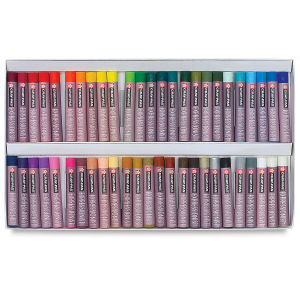
Sakura Cray-Pas Expressionist Oil Pastel Set
Another great low-budget option among the ranks of the best oil pastel for beginners is Pentel Oil Pastels. Pentel pastels produce clear and brilliant colors, that are long-lasting and fade resistant. The colors can be applied smoothly and blended easily. Furthermore, Pentel arts oil pastels are very versatile, and you can use them on many different surfaces such as canvas, board, or regular paper. With Pentel artist oil pastels, you will have your oil pastel best drawingDrawing is a foundational art form that involves creating images on a surface, typically paper, using tools such as pencils, pens, and charcoal. It is a versatile medium that allows artists to express ideas, emotions, and stories through lines, shapes, and shading. Historical Background • Prehistoric Beginnings: The earliest known drawings date back to prehistoric times, with cave drawings found More experience.
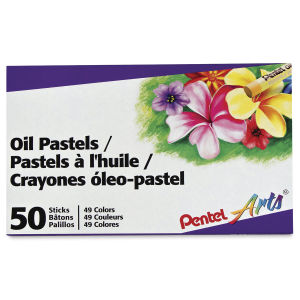
Oil pastels are a great medium for beginners since very few supplies are required to get started. All you need for your best oil pastel paintingPainting is a fundamental form of visual art that has been practiced for thousands of years. It involves applying pigment to a surface such as canvas, paper, or a wall. Painting can be explored through various styles, techniques, and mediums, each offering unique possibilities for expression and creativity. Historical Background • Ancient Beginnings: The history of painting dates back to More is the right kind of paper and a set of pastels. No need for expensive easels, palettes, and brushesBrushes are indispensable tools for artists, used to apply paint, create textures, and define details. With a wide range of shapes, sizes, and materials available, understanding the different types of brushes and their uses can significantly enhance an artist's work. Definition and Composition • Brush: An artist's tool made up of a handle, a ferrule (the metal part that connects More. And no need to wait any longer for your best oil pastel drawingDrawing is a foundational art form that involves creating images on a surface, typically paper, using tools such as pencils, pens, and charcoal. It is a versatile medium that allows artists to express ideas, emotions, and stories through lines, shapes, and shading. Historical Background • Prehistoric Beginnings: The earliest known drawings date back to prehistoric times, with cave drawings found More for beginners to come into existence.
What are the best soft pastels for beginners?
Vibrant and buttery, soft pastels are an absolute delight to draw and paint with. If you are new to pastels and unsure where to start, or when you are on a budget, you can try a student-grade product. As we have seen above, these pastels are made with less expensive pigmentsPigments are essential to the creation of art, providing the vibrant colors that artists use to bring their visions to life. These substances, derived from a variety of natural and synthetic sources, have a rich history and a wide range of applications in both traditional and modern art. Colour Pigments Definition and Composition • Pigment: A material that imparts color More and more filler. They are not as lightfast and produce more dust. But still, you can create spectacular pieces with them! Unlike professional-grade pastels, student-grade pastels are only sold in sets and are not available individually.
According to our test, the best soft pastels for beginner are Blick Studio Pastels. They are made with fine quality raw materials and blend easily for a beautiful, smooth texture without generating too much dust. This set of 48 colors offers exceptional valueIn color theory, value refers to the lightness or darkness of a color. This concept is crucial for artists and designers because it helps create depth, contrast, and visual interest in their work. Value is one of the three properties of color, alongside hue and saturation. Defining Value Value indicates how light or dark a color appears. It ranges from More for money with enough colors to satisfy all but the most demanding artist. You will create your best soft pastel paintingPainting is a fundamental form of visual art that has been practiced for thousands of years. It involves applying pigment to a surface such as canvas, paper, or a wall. Painting can be explored through various styles, techniques, and mediums, each offering unique possibilities for expression and creativity. Historical Background • Ancient Beginnings: The history of painting dates back to More with ease!

Another great option to explore the art of pastels is Jackson Artist Soft Pastels, which contain everything you need to reach a new level in pastel drawingDrawing is a foundational art form that involves creating images on a surface, typically paper, using tools such as pencils, pens, and charcoal. It is a versatile medium that allows artists to express ideas, emotions, and stories through lines, shapes, and shading. Historical Background • Prehistoric Beginnings: The earliest known drawings date back to prehistoric times, with cave drawings found More. They are almost as good as artists’ grade pastels thanks to good quality pigmentsPigments are essential to the creation of art, providing the vibrant colors that artists use to bring their visions to life. These substances, derived from a variety of natural and synthetic sources, have a rich history and a wide range of applications in both traditional and modern art. Colour Pigments Definition and Composition • Pigment: A material that imparts color More. Though soft, these pastels produce less dust than other brands while still providing smooth and creamy coverage. The set includes 48 assorted colors that are enough to create brilliant results. The soft pastels price is very affordable compared to other products.
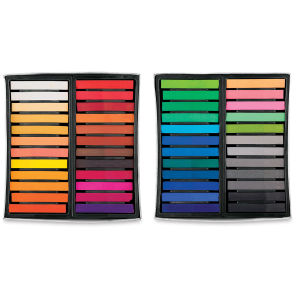
What is the best fixative for pastels/how to set chalk pastels?
Pastel particles are easily smudged or wiped off the paintingPainting is a fundamental form of visual art that has been practiced for thousands of years. It involves applying pigment to a surface such as canvas, paper, or a wall. Painting can be explored through various styles, techniques, and mediums, each offering unique possibilities for expression and creativity. Historical Background • Ancient Beginnings: The history of painting dates back to More surface which raises the question if sealing pastels is necessary. Sometimes, you might do this on purpose to achieve a certain paintingPainting is a fundamental form of visual art that has been practiced for thousands of years. It involves applying pigment to a surface such as canvas, paper, or a wall. Painting can be explored through various styles, techniques, and mediums, each offering unique possibilities for expression and creativity. Historical Background • Ancient Beginnings: The history of painting dates back to More result. At other times though and especially when finishing off a piece, you want the pastel particles to stay firmly in place. So, how to set soft pastels? This is where pastel fixative for varnishing soft pastels comes into play: They lock in the work that you have done and keep it from smudging. There are two main kinds of fixatives: workable fixatives and final fixatives.
Workable fixatives are used between layers so that pigment particles will stay in place when you are layeringLayering is a fundamental technique in art that involves building up multiple layers of material to create depth, texture, and complexity in a composition. This approach is used in various art forms, including painting, drawing, digital art, and mixed media. Layering allows artists to add richness and dimension to their work, making it more dynamic and engaging. Defining Layering Layering More or blending. They are also handy if you wonder how to set pastels when leaving a piece of work unfinished for a while and you need to have it protected in the meantime. Workable fixatives are more a case of personal preference than a necessity. Naturally, you can color, layer, and blend without them.

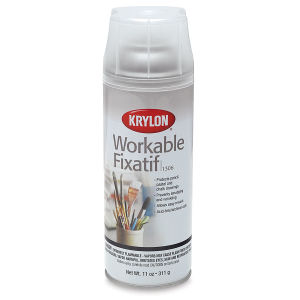
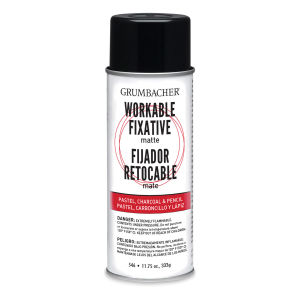
Final fixatives are meant for the use on finished pieces of pastel art, not for pastel artwork you are planning to continue to work on. It will protect your pastel art from smudging and air pollution through dirt, dust, and moisture resistance. Fixatives will further provide archival protection and inhibit light damage with their ultraviolet light filters and stabilizers. They are available in the form of a handy spray can.
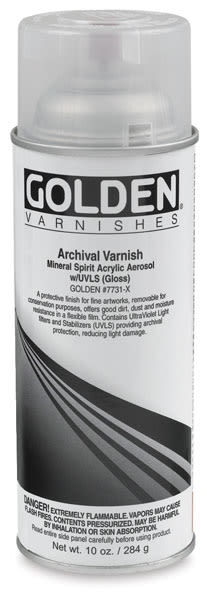
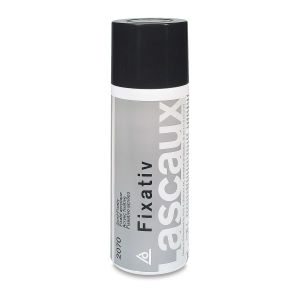
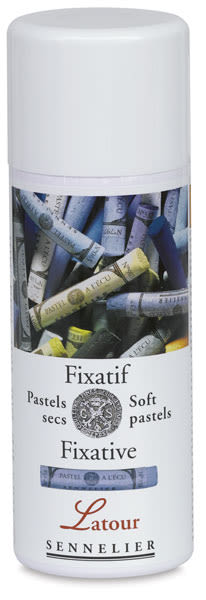
Sennelier Latour Spray Fixative for Pastels
When you decide to use fixative on your best pastel paintingPainting is a fundamental form of visual art that has been practiced for thousands of years. It involves applying pigment to a surface such as canvas, paper, or a wall. Painting can be explored through various styles, techniques, and mediums, each offering unique possibilities for expression and creativity. Historical Background • Ancient Beginnings: The history of painting dates back to More, you need to be aware that they can darken the tone of lighter pastels and dull colors overall. Some artists like this effect, while others avoid the darkening of their colors when paintingPainting is a fundamental form of visual art that has been practiced for thousands of years. It involves applying pigment to a surface such as canvas, paper, or a wall. Painting can be explored through various styles, techniques, and mediums, each offering unique possibilities for expression and creativity. Historical Background • Ancient Beginnings: The history of painting dates back to More in pastels. It comes down to personal preference. If you are new to pastel paintingPainting is a fundamental form of visual art that has been practiced for thousands of years. It involves applying pigment to a surface such as canvas, paper, or a wall. Painting can be explored through various styles, techniques, and mediums, each offering unique possibilities for expression and creativity. Historical Background • Ancient Beginnings: The history of painting dates back to More, we recommend testing fixatives on a piece of spare pastel paper that you apply color on.
How to set oil pastels? Some fixatives are meant for the use on water-based pastels and other media only. This means that you cannot use them for sealing oil pastels. The best fixative for oil pastels will be specifically designed for this purpose, such as the D’Artigny Oil Pastel Fixative by Sennelier. This is the best brand to set your good oil pastel drawingDrawing is a foundational art form that involves creating images on a surface, typically paper, using tools such as pencils, pens, and charcoal. It is a versatile medium that allows artists to express ideas, emotions, and stories through lines, shapes, and shading. Historical Background • Prehistoric Beginnings: The earliest known drawings date back to prehistoric times, with cave drawings found More safely.

Sennelier D’Artigny Oil Pastel Fixative
What paper to use for pastels?
Since pastels are exceptionally versatile, there are many surfaces and a whole range of materials that are suitable for this medium. How to use soft pastels on these media? As long as there is enough tooth for the pastel to grip on, they can be used on almost any surface. While structured paper is the most common surface for pastels, you can also use them on canvas, boards, and sandpaper.
Tooth and texture, the tiny bumps and dents that are visible on rough surfaces, are most important when choosing surfaces for pastel paintingPainting is a fundamental form of visual art that has been practiced for thousands of years. It involves applying pigment to a surface such as canvas, paper, or a wall. Painting can be explored through various styles, techniques, and mediums, each offering unique possibilities for expression and creativity. Historical Background • Ancient Beginnings: The history of painting dates back to More. This is crucial since pastel particles need tooth and texture to grip onto, otherwise, they will fall right off. The tooth is also necessary for shaving off the pigment from the pastel stick or pencil. This is especially important when you use techniques such as layeringLayering is a fundamental technique in art that involves building up multiple layers of material to create depth, texture, and complexity in a composition. This approach is used in various art forms, including painting, drawing, digital art, and mixed media. Layering allows artists to add richness and dimension to their work, making it more dynamic and engaging. Defining Layering Layering More, blending, and detail work.
So, what is the best paper for pastels? — Paper is the most popular surface for pastels since it is not only inexpensive but also gives you numberless options. You get paper in different weights, colors, textures, and thicknesses. You can choose between cheap options that are great for practice and high-quality archival paper that will allow you to create permanent artworks. The strongest papers, also called rag paper, are made from 100 percent cotton. It is acid-free and does not yellow over time.
The best paper for soft pastels is called Ingres paper or pastels paper. Pastels simply grip onto it. Then there is velour paper for pastels, which has a soft velvet-like surface. You can buy these papers in single sheets or in pad form. If you are a student on a budget, you can start with Canson Mi-Teintes DrawingDrawing is a foundational art form that involves creating images on a surface, typically paper, using tools such as pencils, pens, and charcoal. It is a versatile medium that allows artists to express ideas, emotions, and stories through lines, shapes, and shading. Historical Background • Prehistoric Beginnings: The earliest known drawings date back to prehistoric times, with cave drawings found More Paper, which is not only cheap but also versatile. Once you are more familiar with the medium you can experiment with more textured, heavier varieties of pastel paper, such as Canson Mi-Teintes Touch Sanded Papers and Boards, Canson Ingres DrawingDrawing is a foundational art form that involves creating images on a surface, typically paper, using tools such as pencils, pens, and charcoal. It is a versatile medium that allows artists to express ideas, emotions, and stories through lines, shapes, and shading. Historical Background • Prehistoric Beginnings: The earliest known drawings date back to prehistoric times, with cave drawings found More Papers, Strathmore 400 Series Pastel Pads, Art Spectrum Colorfix Coated Pastel Paper, and Hahnemühle Bugra Pastel Paper.

Canson Mi-Teintes Drawing Paper
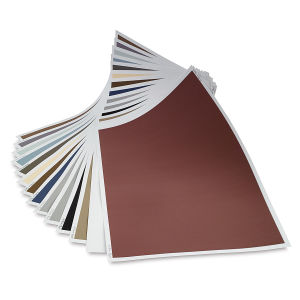
Canson Mi-Teintes Touch Sanded Papers
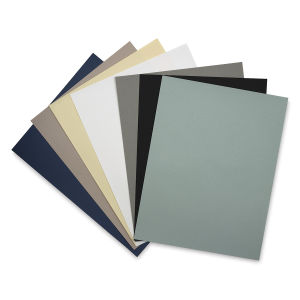
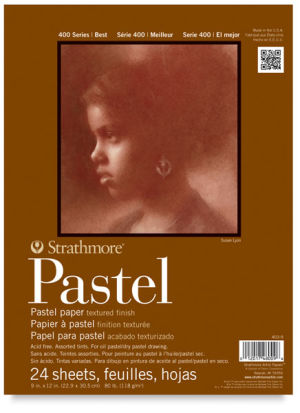
Strathmore 400 Series Pastel Paper Pads
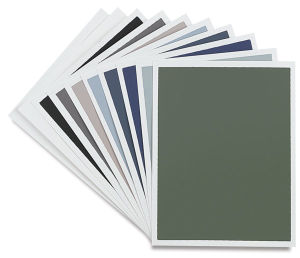
Art Spectrum Colourfix Coated Pastel Paper
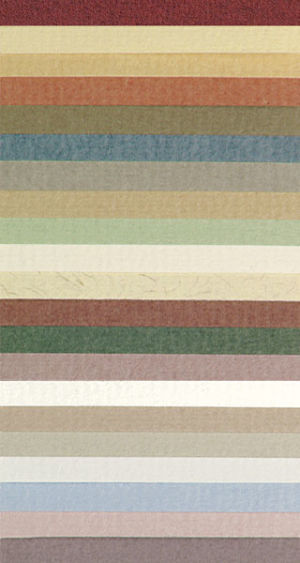
Another option is using watercolor paper for pastels. It also comes in a variety of textures and is very strong. We recommend choosing the cold-pressed or rough paper and avoiding the hot-pressed, smooth ones. The best paper for chalk pastels is the Strathmore 500 Series Watercolor Pastels Paper, Arches Watercolor Paper, and Fabriano Artistico Traditional White Watercolor Paper.
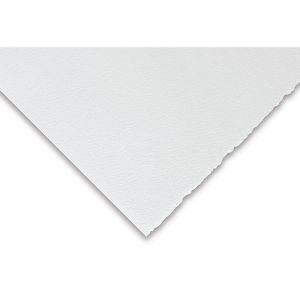
Strathmore Imperial 500 Series Watercolor Paper
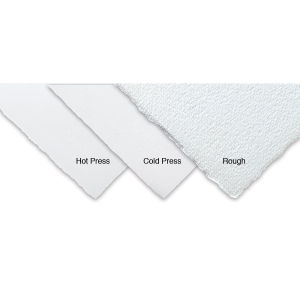
Arches Natural White Watercolor Paper
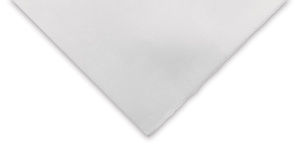
Fabriano Artistico Traditional White Watercolor Paper
Pastel boards are made by mounting watercolor paper or pastel paper to a board. To enhance tooth and texture, they are usually treated with fine particles of cloth or grit. A great option is the Ampersand Pastelboard, which has a clay surface that has been added texture to with fine marble dust granules.
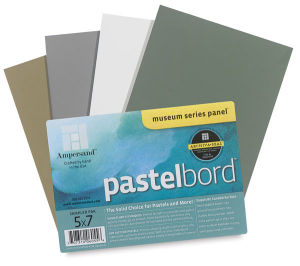
If you want to paint a larger artwork, we recommend canvas, which has the required texture to hold pastels. There are many different forms available, such as pre-stretched canvas, canvas boards, rolls, and pads. Naturally, canvas products will be much pricier than paper, especially when you choose high-quality canvas. Nice canvas to work on, which are not too expensive, are Blick Premier Cotton Canvas, Blick Canvas Panels, and Fredrix Canvas Pads.
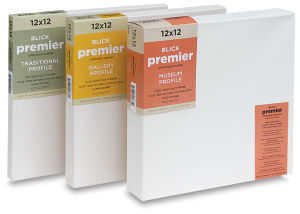
Blick Premier Stretched Cotton Canvas
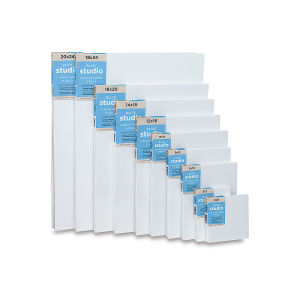
Blick Studio Cotton Canvas Panel
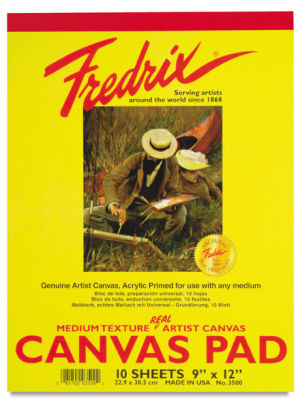
What is the best surface for oil pastels?
Choosing the best paper to use for oil pastels is not an easy task. Artist-grade oil pastels are a very versatile medium that can adhere to a whole variety of surfaces such as paper, cardboard, canvas, stone, wood, and even smooth surfaces such as plastic and glass. However, using your oil pastels on smoother surfaces and papers will run the risk of tearing and smudging. On the other hand, using them on rougher surfaces and papers will allow your colors to hold better. When you are using oil pastel, best brand paper is crucial. The best paper for oil pastels will be Ingres paper, which has a higher tooth content that has a texturized feel to it.
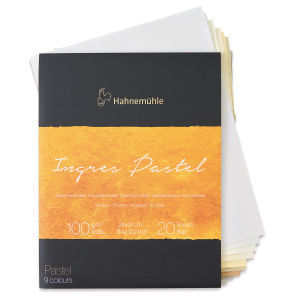
Another common form of paper used for oil pastels is sanded paper, which has been coated with gesso or primer to achieve a hard and rough surface.
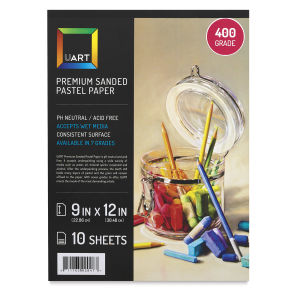
UArt Premium Sanded Pastel Paper Pads
If you want to use canvas for your best quality oil pastels, you should be aware that not all canvas options are meant to be used with oil pastels. When using smoother, stretched canvases you will run the risk of smudging your work. The best canvas for oil pastels will be specifically designed for this purpose. Oil pastel canvas has a distinctly rougher surface. This is because they have been primed with a grit to aid your pastels sticking and holding, which also eliminates the need for any fixative since your best soft oil pastels will be easily absorbed into the surface.
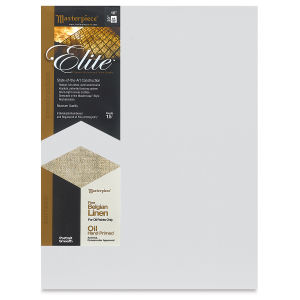
Masterpiece Elite Portrait Smooth Oil Primed Linen Stretched Canvas
What are the best metallic pastels?
The best metallic soft pastels are those found in the PanPastel Artists’ PaintingPainting is a fundamental form of visual art that has been practiced for thousands of years. It involves applying pigment to a surface such as canvas, paper, or a wall. Painting can be explored through various styles, techniques, and mediums, each offering unique possibilities for expression and creativity. Historical Background • Ancient Beginnings: The history of painting dates back to More Pastels line. As we have seen above, PanPastel colors are professional artist-grade soft pastels chalk in a cake-like pan format. They produce only very little dust for a cleaner working environment. The line has introduced brilliant metallic and pearlescent colors, which are mixable and blend like paint for an infinite palette of metallic effects: Metallic light gold, metallic rich gold, metallic bronze, metallic silver, metallic pewter, and metallic copper. They are the best metallic media for creating modern art using oil pastels.
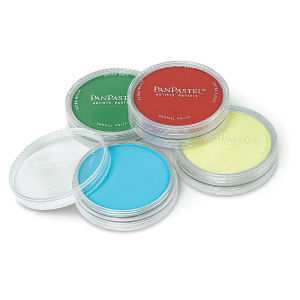
PanPastel Artists’ Painting Pastels
How to clean dirty pastels?
You might not only wonder how to use dry pastels but also how to keep them neat and clean. Your precious, expensive oil pastels get dirty easily when you are using them. Whether you wear gloves or not, every time you pick up a pastel, you transfer particles from the pastel you previously were drawingDrawing is a foundational art form that involves creating images on a surface, typically paper, using tools such as pencils, pens, and charcoal. It is a versatile medium that allows artists to express ideas, emotions, and stories through lines, shapes, and shading. Historical Background • Prehistoric Beginnings: The earliest known drawings date back to prehistoric times, with cave drawings found More with onto the next one. And so the pastels get dirtier and dirtier.
There are many different ways of cleaning pastels. Some artists use a container that holds some kind of gritty substance such as cornmeal, rice flour, or semolina. Then you shake the pastels inside a sieve that fits into the container. The abrasive character of the flour will get rid of the dirt around your pastels.
An easier way of cleaning pastels is to simply use a piece of kitchen paper and rub your pastels against it until the original color is visible.
What are Posca Pastels?
Posca Pastels offer a mess-free and comfortable alternative to common pastels. The cylindric shape is easy to sharpen and is the perfect creative tool for precision work like adding color. With its long and fine body, the Posca Pastel feels like a pencil in your hand. It has a natural gip, guaranteeing great ease of use. It enables you to explore multiple techniques such as scratching, shading, smoothing, and blending colors. What is more, it generates only very little sediment when being used, making it perfect for use at home or en plein airThe French term “en plein air” means “out-doors”. Plein air painting therefore refers to the practice of painting an entire finished picture out of doors. Artists have long worked out of doors to create landscape sketches for the preparation of further studio work. The plein air approach, finishing entire pictures out-doors, however, began only in the 19th century, initiated by More. The set of 24 pastels includes a range of fabulous radiant colors.
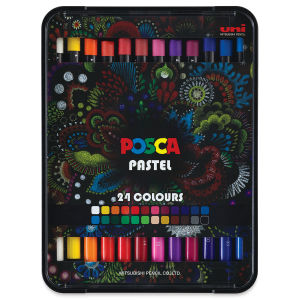
What are gel pastels?
Gel pastels are mixed mediaMixed media involves combining various art materials and techniques within a single artwork. This approach allows artists to explore diverse textures, effects, and expressions. Basic Components of Mixed Media • Traditional Media: Includes paints, inks, and pencils. • Non-Traditional Media: Items like fabric, metal, and found objects. • Digital Elements: Incorporating digital prints or using software for certain effects. Techniques More sticks, that are highly pigmented and glide onto virtually any porous surface. They produce vibrant, lightfast color. We recommend using the great Kingart Mixed MediaMixed media involves combining various art materials and techniques within a single artwork. This approach allows artists to explore diverse textures, effects, and expressions. Basic Components of Mixed Media • Traditional Media: Includes paints, inks, and pencils. • Non-Traditional Media: Items like fabric, metal, and found objects. • Digital Elements: Incorporating digital prints or using software for certain effects. Techniques More Gel Sticks. They can go on opaque to pop up dark surfaces, but they can also be brushed or blended with water to create translucent watercolor effects, for example for paintingPainting is a fundamental form of visual art that has been practiced for thousands of years. It involves applying pigment to a surface such as canvas, paper, or a wall. Painting can be explored through various styles, techniques, and mediums, each offering unique possibilities for expression and creativity. Historical Background • Ancient Beginnings: The history of painting dates back to More brilliant pastel paintings of flowers and still lives.

Kingart Mixed Media Gel Sticks
They are popular with hobbyists and established artists alike who want to add color to a wide variety of surfaces, including paper, wood, canvas, glass, chipboard, and fabric. The gel pastels are odorless, non-toxic, and include a sturdy storage case. We recommend the set of 48 assorted colors with a broad range of dazzling gel sticks.
What are the best fluorescent pastels?
We highly recommend the fluorescent pastels in the line of Townsend Artists’ Soft Form Pastels. They encompass a vivid range of modern pigmentsPigments are essential to the creation of art, providing the vibrant colors that artists use to bring their visions to life. These substances, derived from a variety of natural and synthetic sources, have a rich history and a wide range of applications in both traditional and modern art. Colour Pigments Definition and Composition • Pigment: A material that imparts color More and mixes based on the need of contemporary artists. The fluorescent set includes a fluorescent orange, red, pink, magenta, violet-blue, blaze orange, lemon, blue, green, violet red, light green, and purple. These colors will let your artwork truly shine.
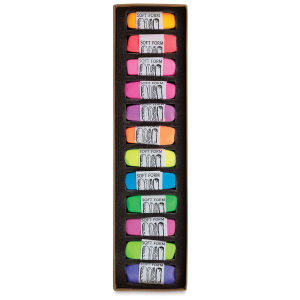
Townsend Artists’ Soft Form Pastel Set – Fluorescent
Oil pastels or soft pastels: What are the differences?
Oil vs soft pastels. Which pastels should you choose for your paintingPainting is a fundamental form of visual art that has been practiced for thousands of years. It involves applying pigment to a surface such as canvas, paper, or a wall. Painting can be explored through various styles, techniques, and mediums, each offering unique possibilities for expression and creativity. Historical Background • Ancient Beginnings: The history of painting dates back to More practice? There are notable differences in the working properties, the range of techniques that work best using them, and the appearance of your finished paintingPainting is a fundamental form of visual art that has been practiced for thousands of years. It involves applying pigment to a surface such as canvas, paper, or a wall. Painting can be explored through various styles, techniques, and mediums, each offering unique possibilities for expression and creativity. Historical Background • Ancient Beginnings: The history of painting dates back to More. Many different types of oil pastels use a different binder to hold the pigment together, which gives the pastel a unique quality. They are oilier and creamier in texture and have a satin sheen to them. While when using soft pastels they create powder and dust, oil pastels don’t. Usually, manufacturers of soft pastels create a greater range of colors, so that you will be able to mix clean color gradations. There is specific fixative available for setting oil pastels that you should pay attention to.
General gallery pastels are made from pigment and a binder of wax and oil. Different brands of oil pastels will contain differing quantities of ingredients, while professional grade brands contain a higher amount of pigment. For instance, when you buy oil pastels by Sennelier, these contain an extra high quality of pigmentsPigments are essential to the creation of art, providing the vibrant colors that artists use to bring their visions to life. These substances, derived from a variety of natural and synthetic sources, have a rich history and a wide range of applications in both traditional and modern art. Colour Pigments Definition and Composition • Pigment: A material that imparts color More, and they use non-drying oil and mineral wax.
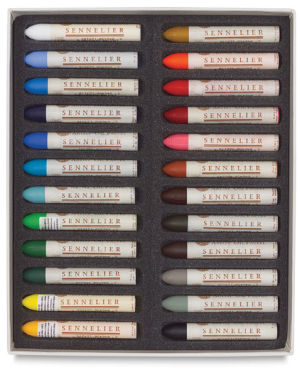
Sennelier Oil Pastels
So, what are soft pastels all about? Soft pastels are made from pigment with a small amount of binder such as chalk and gum arabic. Professional brands of pastels have the highest concentration of pigment in their mixtures. Schmincke, for example, has designed a custom manufacturing process to handle the delicate pastels, making sure that they don’t break.
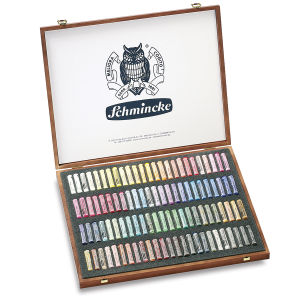
Soft pastels feel drier, whereas oil pastels can feel waxy, slick, and greasy. Oil pastels tend to be more durable and are less likely to crumble or break.
What colors are Pastels?
The word “pastels” can be confusing, since it does not only describe the art medium of pastels sticks, pans, and pencils, but also a range of colors itself. So, what are pastel colors? A pastel color is any light pastels color that has just enough white mixed into it to look soft and pale while maintaining its bright and colorful personality. Examples are colors such as light azure, creamy mint, millennial pink, and whimsy yellow. Technically, you can make any color a pretty pastels hueIn color theory, hue is one of the main properties of a color, defining its dominant wavelength. This characteristic determines whether we perceive a color as red, orange, yellow, green, blue, or violet. Understanding hue is essential for artists, designers, and anyone working with color. Defining Hue • Definition: Hue is the degree to which a color can be described More by adding a significant amount of white to it. The more white you add, the paler the tons pastel will be. Pastel colors have a softer look than their more saturated counterparts and they are usually described by adjectives such as “washed out”, “pale “, “soft”, “muted”, and “light”. Then there are neutral pastels which encompass grey tonesIn color theory, a tone is a version of a color created by adding gray (a mix of black and white) to the original hue. This concept is essential for artists and designers as it allows for a wide range of colors that are neither too dark nor too light, providing versatility in creating depth, mood, and harmony within a More, Chinese silver, white chocolate, and similar tonesIn color theory, a tone is a version of a color created by adding gray (a mix of black and white) to the original hue. This concept is essential for artists and designers as it allows for a wide range of colors that are neither too dark nor too light, providing versatility in creating depth, mood, and harmony within a More.

The color psychologyColor psychology examines how colors influence human behavior, emotions, and perceptions. This field combines elements of art, design, and psychology to understand the impact of color on our daily lives. It explores how different hues can evoke specific feelings and responses. Colors play a crucial role in visual communication. They can convey messages, set moods, and even affect decision-making. For More behind pastel colors is fascinating and decorating with pastels can be a lot of fun. Pastels can be peaceful and calming, romantic, reminiscent of spring like in easter pastels and spring pastels for decoration, in winter pastels, fall pastels and summer pastels, or baby-centric. They are also widely used in cosmetics such as the beauty bay pastels palette or in Wella pastels or Loreal pastels for hair style. You have ever wondered how to wear pastels? There is a true science behind wearing pastels and how to style pastels outfits.
How to use hard pastels?
First, let’s look at the difference between hard and soft pastels. Soft pastels have less binder and more pigment, so the color is much more intense. At the same time less binder also means more dry pigment, making the pastel stick crumble more easily. Soft pastels’ powdery texture makes them ideal for blending and layeringLayering is a fundamental technique in art that involves building up multiple layers of material to create depth, texture, and complexity in a composition. This approach is used in various art forms, including painting, drawing, digital art, and mixed media. Layering allows artists to add richness and dimension to their work, making it more dynamic and engaging. Defining Layering Layering More.

Hard pastels on the other hand contain much more binder and less pigment, making them more stable and less prone to crumbling. However, you still need to be prepared for a mess, just touching a pastel stick means you will get pigment on your fingers and hands.
What to do with pastels? Hard pastels can be used on any kind of paper. The best papers are heavier with “tooth” that can hold the pigment particles as you apply them. The tooth is the texture, the “hills and valleys” on the paper. Refrain from blending too much with your fingers and use a bristled brush instead. Carefully brush in one direction, not back and forth, to avoid dusting off too much pigment.
What are the best kids’ oil pastels?
In our opinion, the best oil pastels for kids are made by Pentel. This is based on two reasons: Pentel offers a great solution to the price-sensitive buyer while also providing outstanding blending quality. The colors of these big oil pastels can be applied smoothly and lead to brilliant coloring results. They are very versatile and can be used on paper, canvas, or board. And these large oil pastels even offer a massive 432 pack, which is great for classroom use. Time for easy art with oil pastels! If you like Pentel oil pastels, you can also try Pentel watercolor pastels, which offer great valueIn color theory, value refers to the lightness or darkness of a color. This concept is crucial for artists and designers because it helps create depth, contrast, and visual interest in their work. Value is one of the three properties of color, alongside hue and saturation. Defining Value Value indicates how light or dark a color appears. It ranges from More for money.
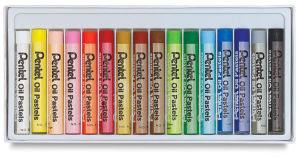
What are the best sidewalk pastels?
According to our tests, the best sidewalk pastels are Richeson Street Stix Pavement Pastels. They were developed especially for use by street artists and have an extra-large size. The pigmentsPigments are essential to the creation of art, providing the vibrant colors that artists use to bring their visions to life. These substances, derived from a variety of natural and synthetic sources, have a rich history and a wide range of applications in both traditional and modern art. Colour Pigments Definition and Composition • Pigment: A material that imparts color More are designed for long-lasting sidewalk paintings, murals, and other outdoor activities and they contain the same vibrant pigmentsPigments are essential to the creation of art, providing the vibrant colors that artists use to bring their visions to life. These substances, derived from a variety of natural and synthetic sources, have a rich history and a wide range of applications in both traditional and modern art. Colour Pigments Definition and Composition • Pigment: A material that imparts color More that other Richeson Pastels are known for. Richeson Stix blend nicely and hardly crumble when applying to rough surfaces such as pavement. You can start with this set of 12 Richeson Pastels and buy more colors individually as you go along.
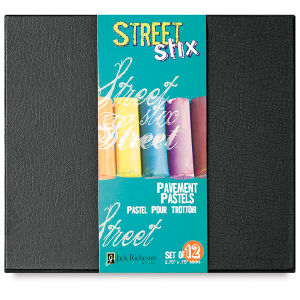
Richeson Street Stix Pavement Pastel Set
What are the best neon oil pastels?
The best neon oil pastels are the traditional Crayola Oil Pastels, assorted neon colors. The set of oil pastels features 12 vibrant sticks of vibrant neopastel oil pastels, which are perfect for creating eye-grabbing works of art. They feature a hexagonal shape that makes them easy to hold and prevents them from rolling away. Safe and non-toxic, the neocolor wax pastels are even appropriate for kids 4 years and up. Designed with kids in mind, art using pastels has never been that easy and the product is tested and approved to meet the highest standards of quality. They are perfect for classrooms, poster making, and all kinds of kids’ crafts.
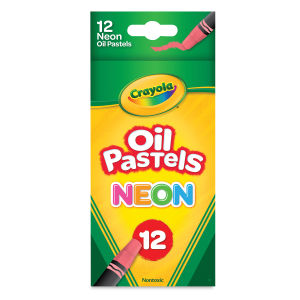
Crayola Oil Pastels – Neon Colors
How to draw with pastels and how to color with pastels?
Soft pastels allow you to draw spontaneously and casually. When you are a beginner, not everything will be perfect from the start, but that does not matter since soft pastel drawings can easily be corrected. Practicing a number of techniques and doing creative work will reward you with a sense of delight.
So, what to draw with pastels? You can both take a painterly and drawingDrawing is a foundational art form that involves creating images on a surface, typically paper, using tools such as pencils, pens, and charcoal. It is a versatile medium that allows artists to express ideas, emotions, and stories through lines, shapes, and shading. Historical Background • Prehistoric Beginnings: The earliest known drawings date back to prehistoric times, with cave drawings found More approach when figuring out how to draw with pastels. The rectangular shape of your drawingDrawing is a foundational art form that involves creating images on a surface, typically paper, using tools such as pencils, pens, and charcoal. It is a versatile medium that allows artists to express ideas, emotions, and stories through lines, shapes, and shading. Historical Background • Prehistoric Beginnings: The earliest known drawings date back to prehistoric times, with cave drawings found More tools allows you to draw lines as well as color in areas. This blurs the boundary between paintingPainting is a fundamental form of visual art that has been practiced for thousands of years. It involves applying pigment to a surface such as canvas, paper, or a wall. Painting can be explored through various styles, techniques, and mediums, each offering unique possibilities for expression and creativity. Historical Background • Ancient Beginnings: The history of painting dates back to More and drawingDrawing is a foundational art form that involves creating images on a surface, typically paper, using tools such as pencils, pens, and charcoal. It is a versatile medium that allows artists to express ideas, emotions, and stories through lines, shapes, and shading. Historical Background • Prehistoric Beginnings: The earliest known drawings date back to prehistoric times, with cave drawings found More and allows you to do an easy drawingDrawing is a foundational art form that involves creating images on a surface, typically paper, using tools such as pencils, pens, and charcoal. It is a versatile medium that allows artists to express ideas, emotions, and stories through lines, shapes, and shading. Historical Background • Prehistoric Beginnings: The earliest known drawings date back to prehistoric times, with cave drawings found More with soft pastels in no time.
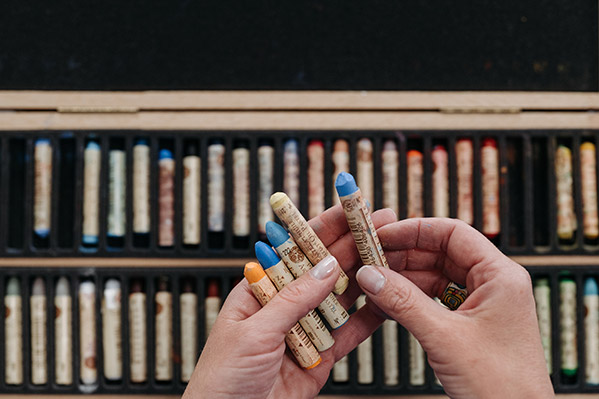
When you draw a portrait in pastels in a very spontaneous process, the color applied can be easily blended. This is because the pigmentsPigments are essential to the creation of art, providing the vibrant colors that artists use to bring their visions to life. These substances, derived from a variety of natural and synthetic sources, have a rich history and a wide range of applications in both traditional and modern art. Colour Pigments Definition and Composition • Pigment: A material that imparts color More of soft pastels are held together by only a minimal percentage of bindersBinders are crucial components in the creation of art materials. They hold pigments together, allowing them to adhere to a surface and form a durable film. Understanding the different types of binders and their properties helps artists choose the right materials for their work. Definition and Composition • Binder: A substance that holds pigment particles together and allows them to More.
Easy things to draw with pastels are numberless – from a portrait in pastels to landscapes and still lives. You can draw fine lines using the tip and thick lines using the edge. Use the wide pastel side to color in larger areas. Exerting more or less pressure, you can decrease or increase the saturation of the color applied. When you are looking for ideas for easy drawings, oil pastels can also be your medium of choice, since they are just as easy to apply.
How to work with pastels when blending? — You will love blending pigmentsPigments are essential to the creation of art, providing the vibrant colors that artists use to bring their visions to life. These substances, derived from a variety of natural and synthetic sources, have a rich history and a wide range of applications in both traditional and modern art. Colour Pigments Definition and Composition • Pigment: A material that imparts color More into beautiful gradients and mixes of colors. You can use a blending stump, a rag, or other material for doing so. When learning how to blend soft pastels, remember to always blend colors from a lighter area towards a darker one. You can mix soft pastels directly on the paper. Simply apply the colors over or beside each other and then blend the layers with your fingers or tools.
How do you make art using oil pastels?
There are many different approaches to how to draw with pastels. Following just a few instructions, you will be able to paint great art with oil pastels, maybe paint a stunning sunset with oil pastels or a soft pastels sky. To become confident in different techniques, it is a good idea to start with a still live object.

Color hues can be achieved by layeringLayering is a fundamental technique in art that involves building up multiple layers of material to create depth, texture, and complexity in a composition. This approach is used in various art forms, including painting, drawing, digital art, and mixed media. Layering allows artists to add richness and dimension to their work, making it more dynamic and engaging. Defining Layering Layering More oil pastels. Begin with adding your first layer of pastels and then follow up with another layer using a different color of pastels. Keep applying layers until you reach the color you are looking for. How to blend when creating art with oil pastels? Consider heavy-pressure or light-pressure for different effects.
When creating modern art with oil pastels, you might want to consider pre-blending your colors in a palette or directly on the paper or canvas. Simply apply colors next to each other on the canvas and then use a brush and dip it into some oil in order to blend the colors.
How to store pastels?
When you buy a box of oil pastels or soft pastels, they usually come in a great-looking cardboard box with foam inserts. They are already ordered by color for you, so you could easily leave them in their boxes as you go ahead to use them. But then you end up using another box of pastels and things get messed up, having two boxes with all the colors in it, that means yellows in one box, yellows in another box. And next to that, you might decide to buy some individual pastels with no space left in your foam-shaped inserts, so they go into an old shoebox. It is definitely time to organize your pastels!
This is where artists’ sketch boxes come into play, such as the Art Alternatives Artist’s Sketch Box with Palette. This hand-sanded hardwood sketch box is optimal for students, crafters, plein air artists or anyone who wants a great way to protect, transport and store their art suppliesArt supplies are the tools and materials artists use to create their works. They range from basic items like pencils and paper to more specialized equipment like airbrushes and printing presses. Basic Art Supplies • Pencils: Available in various grades, from hard (H) to soft (B). Essential for sketching and detailed drawing. • Erasers: Include kneaded, rubber, and precision erasers. More. The interior is divided into four compartments, perfect for organizing your pastels and other supplies.
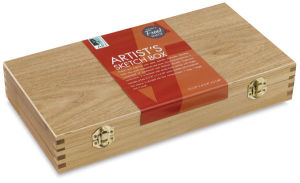
Art Alternatives Artist’s Sketch Box with Palette
Another great option is the Sienna Pochade Box, which is an all-in-one solution for on-the-go pastel artists. The box is very light and it is two in one: both an easel and a pastel holder, with foam-lined storage for pastels inside and additionally an accessory tray for other tools. The aluminum mounting plate under the bottom holds the box firmly on a tripod when you are working.

Watercolor & Pastels – How to combine the two?
Sometimes watercolor paintings can lack a bit of contrast due to their watery consistency. An awesome way to add some more contrast and texture to your abstract art Abstract artworks diverge from depicting recognizable scenes or objects and instead use colors, forms, and lines to create compositions that exist independently of visual references from the natural world. This movement, which gained momentum in the early 20th century, was propelled by artists such as Wassily Kandinsky, Piet Mondrian, and Kazimir Malevich. These artists aimed to explore spiritual, emotional, and More pastels paintings and realistic paintings is to outline some elements with pastels. Both mediums, watercolor and pastels, are great to combine since they are both very mat. Let your watercolor paintingPainting is a fundamental form of visual art that has been practiced for thousands of years. It involves applying pigment to a surface such as canvas, paper, or a wall. Painting can be explored through various styles, techniques, and mediums, each offering unique possibilities for expression and creativity. Historical Background • Ancient Beginnings: The history of painting dates back to More dry completely before applying the pastel crayons. The best way is to outline the contours of your paintingPainting is a fundamental form of visual art that has been practiced for thousands of years. It involves applying pigment to a surface such as canvas, paper, or a wall. Painting can be explored through various styles, techniques, and mediums, each offering unique possibilities for expression and creativity. Historical Background • Ancient Beginnings: The history of painting dates back to More with the pastels. You can use a variety of colors or only one, just as your intuition tells you. Further highlight some elements of your choice on your paintingPainting is a fundamental form of visual art that has been practiced for thousands of years. It involves applying pigment to a surface such as canvas, paper, or a wall. Painting can be explored through various styles, techniques, and mediums, each offering unique possibilities for expression and creativity. Historical Background • Ancient Beginnings: The history of painting dates back to More. Finally, scrub softly with a stiff brush to soften the hard edges of the pastel strokes and lighten some areas. You will find that the pastels add very vibrant highlights and a bit of texture to the paintingPainting is a fundamental form of visual art that has been practiced for thousands of years. It involves applying pigment to a surface such as canvas, paper, or a wall. Painting can be explored through various styles, techniques, and mediums, each offering unique possibilities for expression and creativity. Historical Background • Ancient Beginnings: The history of painting dates back to More. We recommend setting the final paintingPainting is a fundamental form of visual art that has been practiced for thousands of years. It involves applying pigment to a surface such as canvas, paper, or a wall. Painting can be explored through various styles, techniques, and mediums, each offering unique possibilities for expression and creativity. Historical Background • Ancient Beginnings: The history of painting dates back to More with fixative.
Abstract artworks diverge from depicting recognizable scenes or objects and instead use colors, forms, and lines to create compositions that exist independently of visual references from the natural world. This movement, which gained momentum in the early 20th century, was propelled by artists such as Wassily Kandinsky, Piet Mondrian, and Kazimir Malevich. These artists aimed to explore spiritual, emotional, and More pastels paintings and realistic paintings is to outline some elements with pastels. Both mediums, watercolor and pastels, are great to combine since they are both very mat. Let your watercolor paintingPainting is a fundamental form of visual art that has been practiced for thousands of years. It involves applying pigment to a surface such as canvas, paper, or a wall. Painting can be explored through various styles, techniques, and mediums, each offering unique possibilities for expression and creativity. Historical Background • Ancient Beginnings: The history of painting dates back to More dry completely before applying the pastel crayons. The best way is to outline the contours of your paintingPainting is a fundamental form of visual art that has been practiced for thousands of years. It involves applying pigment to a surface such as canvas, paper, or a wall. Painting can be explored through various styles, techniques, and mediums, each offering unique possibilities for expression and creativity. Historical Background • Ancient Beginnings: The history of painting dates back to More with the pastels. You can use a variety of colors or only one, just as your intuition tells you. Further highlight some elements of your choice on your paintingPainting is a fundamental form of visual art that has been practiced for thousands of years. It involves applying pigment to a surface such as canvas, paper, or a wall. Painting can be explored through various styles, techniques, and mediums, each offering unique possibilities for expression and creativity. Historical Background • Ancient Beginnings: The history of painting dates back to More. Finally, scrub softly with a stiff brush to soften the hard edges of the pastel strokes and lighten some areas. You will find that the pastels add very vibrant highlights and a bit of texture to the paintingPainting is a fundamental form of visual art that has been practiced for thousands of years. It involves applying pigment to a surface such as canvas, paper, or a wall. Painting can be explored through various styles, techniques, and mediums, each offering unique possibilities for expression and creativity. Historical Background • Ancient Beginnings: The history of painting dates back to More. We recommend setting the final paintingPainting is a fundamental form of visual art that has been practiced for thousands of years. It involves applying pigment to a surface such as canvas, paper, or a wall. Painting can be explored through various styles, techniques, and mediums, each offering unique possibilities for expression and creativity. Historical Background • Ancient Beginnings: The history of painting dates back to More with fixative.
The same technique can be applied to acrylic & pastels. After your acrylic layer has dried, begin to work with your soft pastels to define objects and create a color scheme. Use your darkest colors first, and spray a layer of workable fixative if you feel comfortable using it.
What are the best blending tools for soft pastels and what are blending tools for oil pastels?
The best “tools” to blend your pastels and the most obvious ones are your fingers. Many artists rely on fingers alone to blend their pastels. The downside is that your finger might turn sensitive with too much rubbing. Furthermore, you might have difficulty blending areas that call for smaller tools than your fingers’ width. And you will need to be mindful to wash your hands frequently to avoid smudging other parts of your picture unintendedly.
A cleaner option is to use finger cots, which also protects your fingers from rubbing raspy. Once you are done rubbing a certain color, just remove the cot and put on a second one for blending another color. This is as clean as it gets!

Alternatively, you can use q-tips or cotton buds or even tortillons or stumps. The latter are tightly wound sheets of paper in the shape of a pencil, and you can rub the tip of the tortillon on the spot that you want to blend. As soon as the tortillon gets dirty, simply unwind the paper to expose a fresh part of the tip.
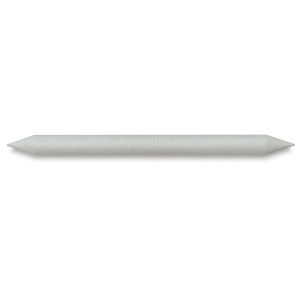
You can further blend pastels using a cloth. But more effective will be a chamois, which is a soft, flexible leather that is excellent for blending pastel colors. Once the chamois gets dirty, you can wash it dry by hand, making it as good as new.
And finally, a kneaded rubber is a must-have for every pastel artist. It is the most pliable eraser on the market, which is great when you want to blend a tiny area. You can simply twist and mold the rubber into the proper shape and then do the blending.
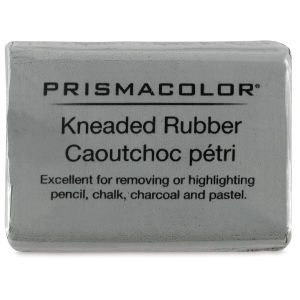
Prismacolor Kneaded Rubber Eraser
Do you want to improve your pastel drawingDrawing is a foundational art form that involves creating images on a surface, typically paper, using tools such as pencils, pens, and charcoal. It is a versatile medium that allows artists to express ideas, emotions, and stories through lines, shapes, and shading. Historical Background • Prehistoric Beginnings: The earliest known drawings date back to prehistoric times, with cave drawings found More and paintingPainting is a fundamental form of visual art that has been practiced for thousands of years. It involves applying pigment to a surface such as canvas, paper, or a wall. Painting can be explored through various styles, techniques, and mediums, each offering unique possibilities for expression and creativity. Historical Background • Ancient Beginnings: The history of painting dates back to More skills? We highly recommend checking out the following online classes, which will give you valuable insights and precious new knacks!
Soft Pastels for Beginners — Easy DrawingDrawing is a foundational art form that involves creating images on a surface, typically paper, using tools such as pencils, pens, and charcoal. It is a versatile medium that allows artists to express ideas, emotions, and stories through lines, shapes, and shading. Historical Background • Prehistoric Beginnings: The earliest known drawings date back to prehistoric times, with cave drawings found More Tutorials & Techniques
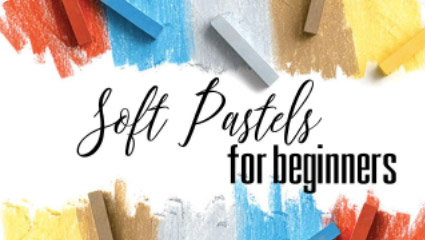
Soft Pastels — Beginner Tips & Techniques Workshop

Mixed MediaMixed media involves combining various art materials and techniques within a single artwork. This approach allows artists to explore diverse textures, effects, and expressions. Basic Components of Mixed Media • Traditional Media: Includes paints, inks, and pencils. • Non-Traditional Media: Items like fabric, metal, and found objects. • Digital Elements: Incorporating digital prints or using software for certain effects. Techniques More: A Beginners Approach to Abstract PaintingPainting is a fundamental form of visual art that has been practiced for thousands of years. It involves applying pigment to a surface such as canvas, paper, or a wall. Painting can be explored through various styles, techniques, and mediums, each offering unique possibilities for expression and creativity. Historical Background • Ancient Beginnings: The history of painting dates back to More
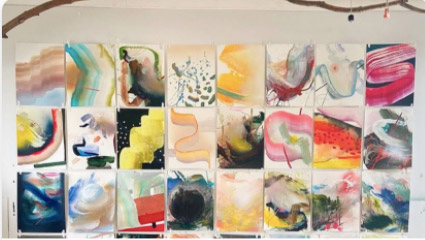
You might also enjoy reading the following posts by Pigment Pool:
A Brief History of Colour Pigments
The Best Sketching Pencils for Artists and Beginners in 2022
Ultimate Guide to the Best Colored Pencils – Must-Know Facts for Hobbyists and Artists
This article may contain compensated links. Please read Disclaimer for more info. As an Amazon Associate, I earn from qualifying purchases.
